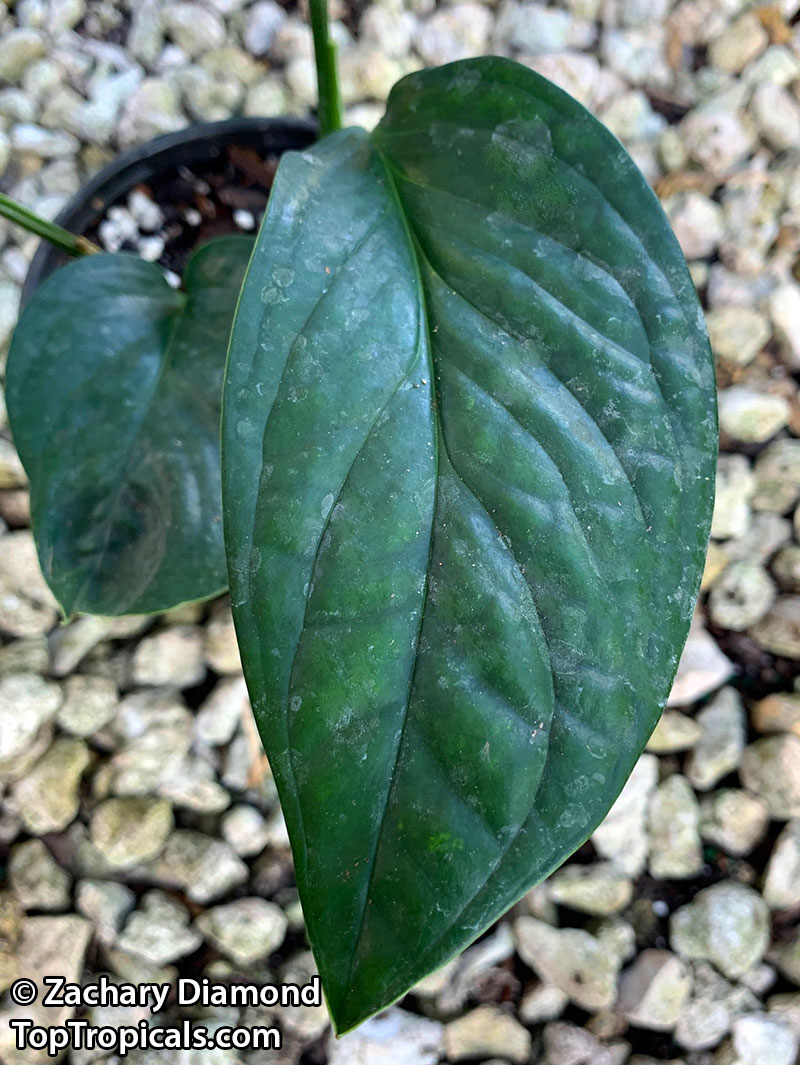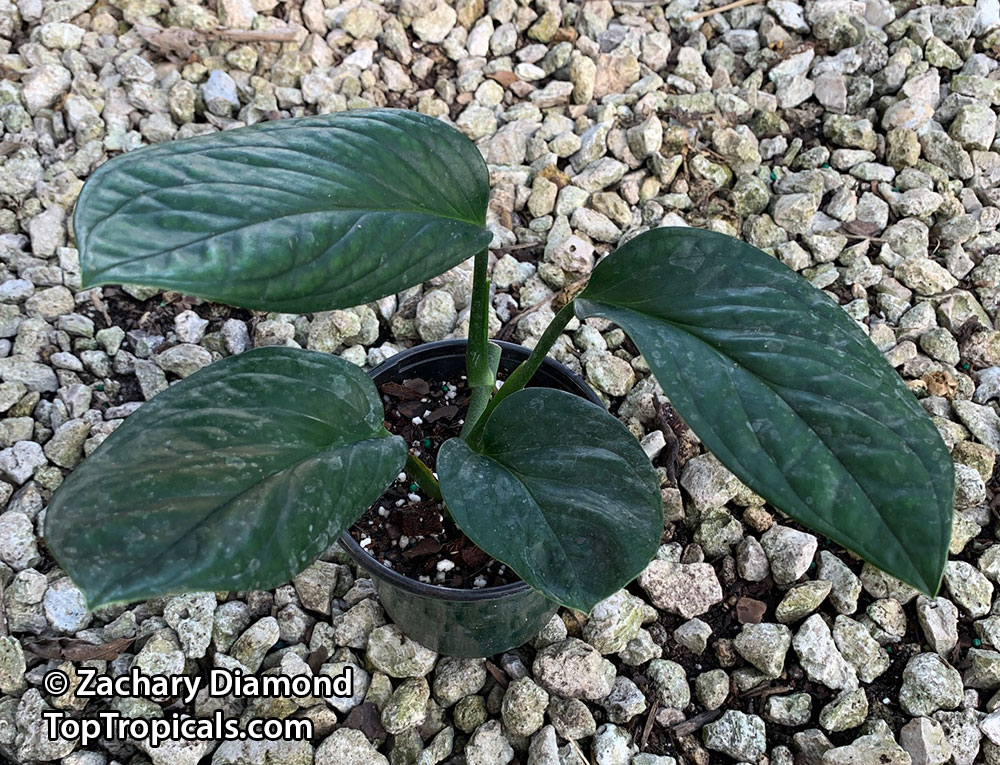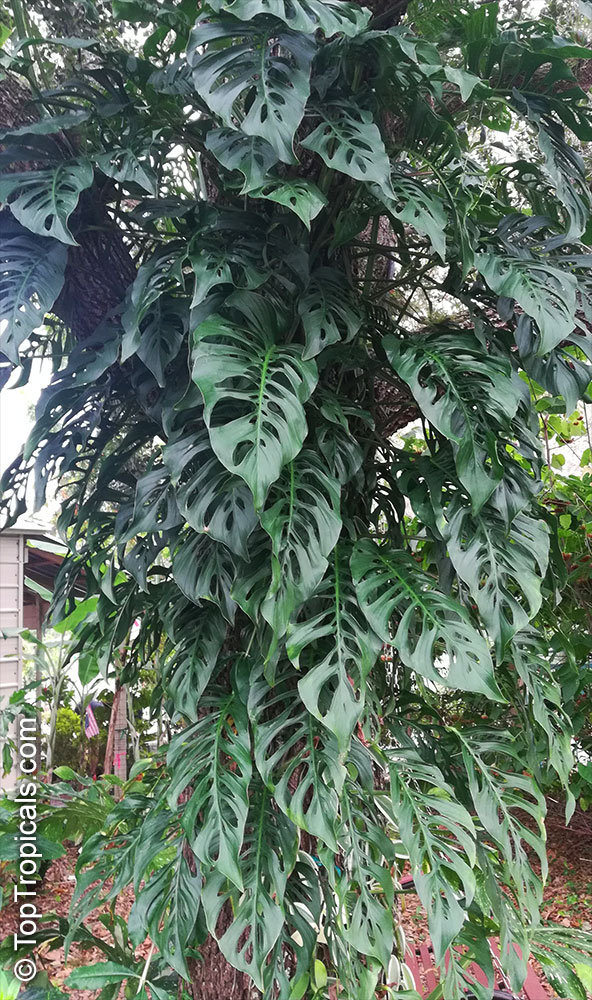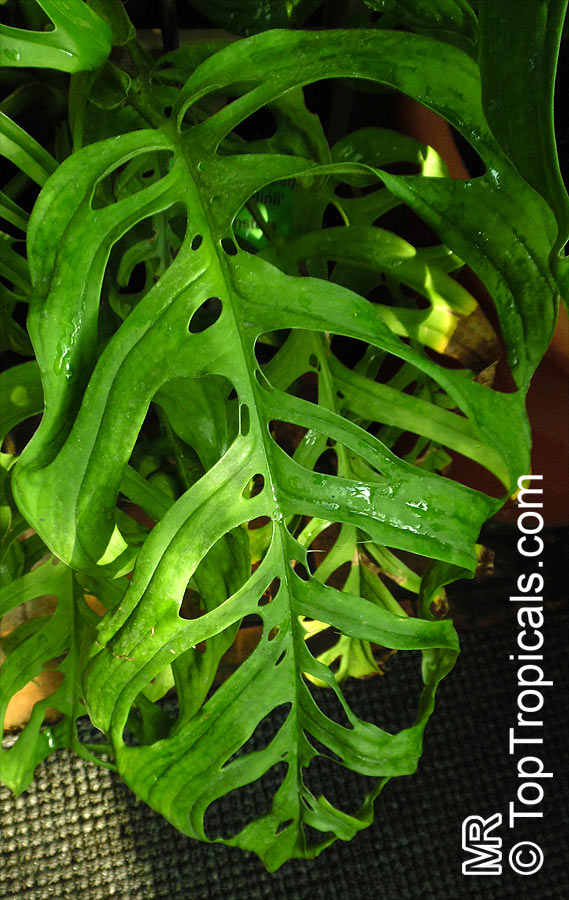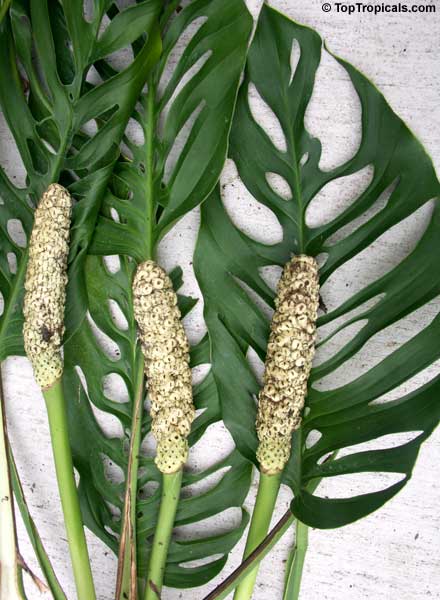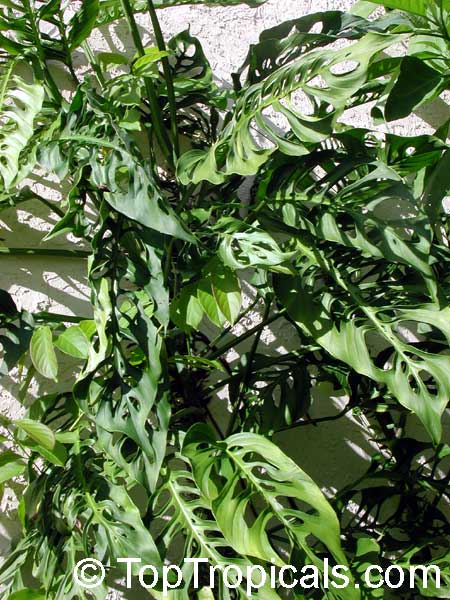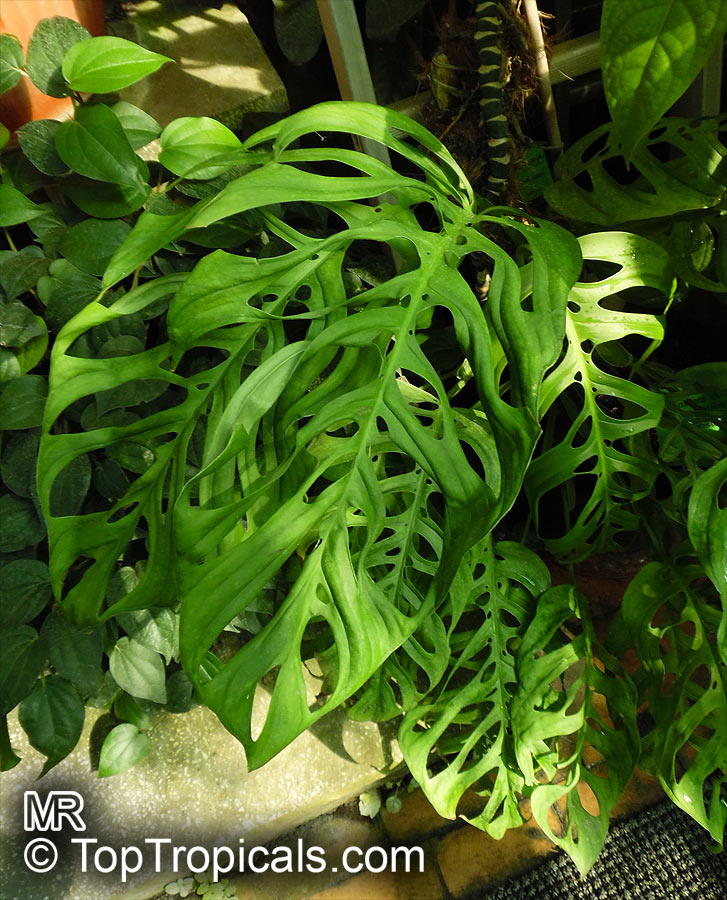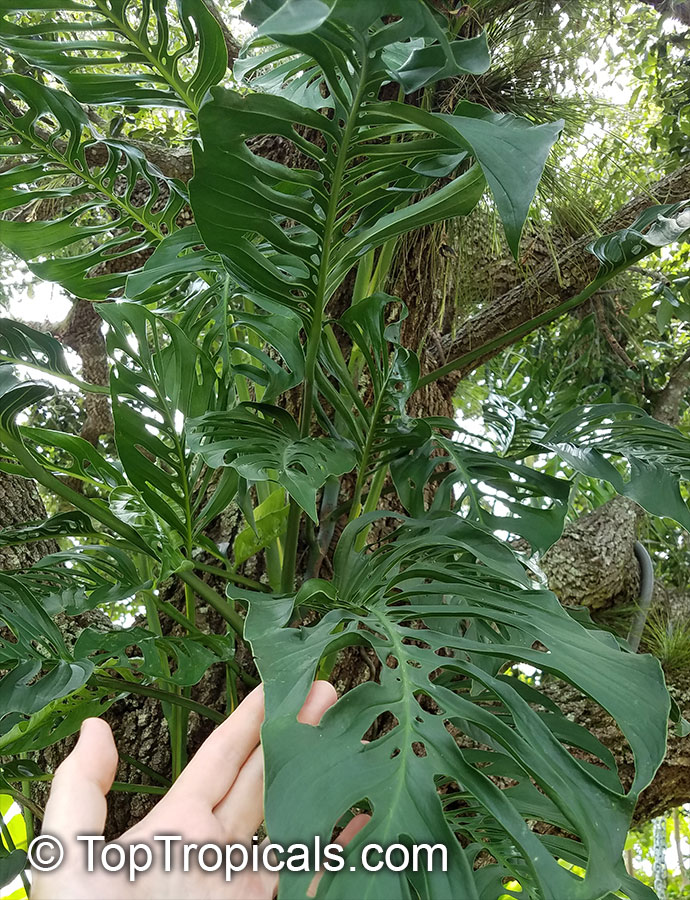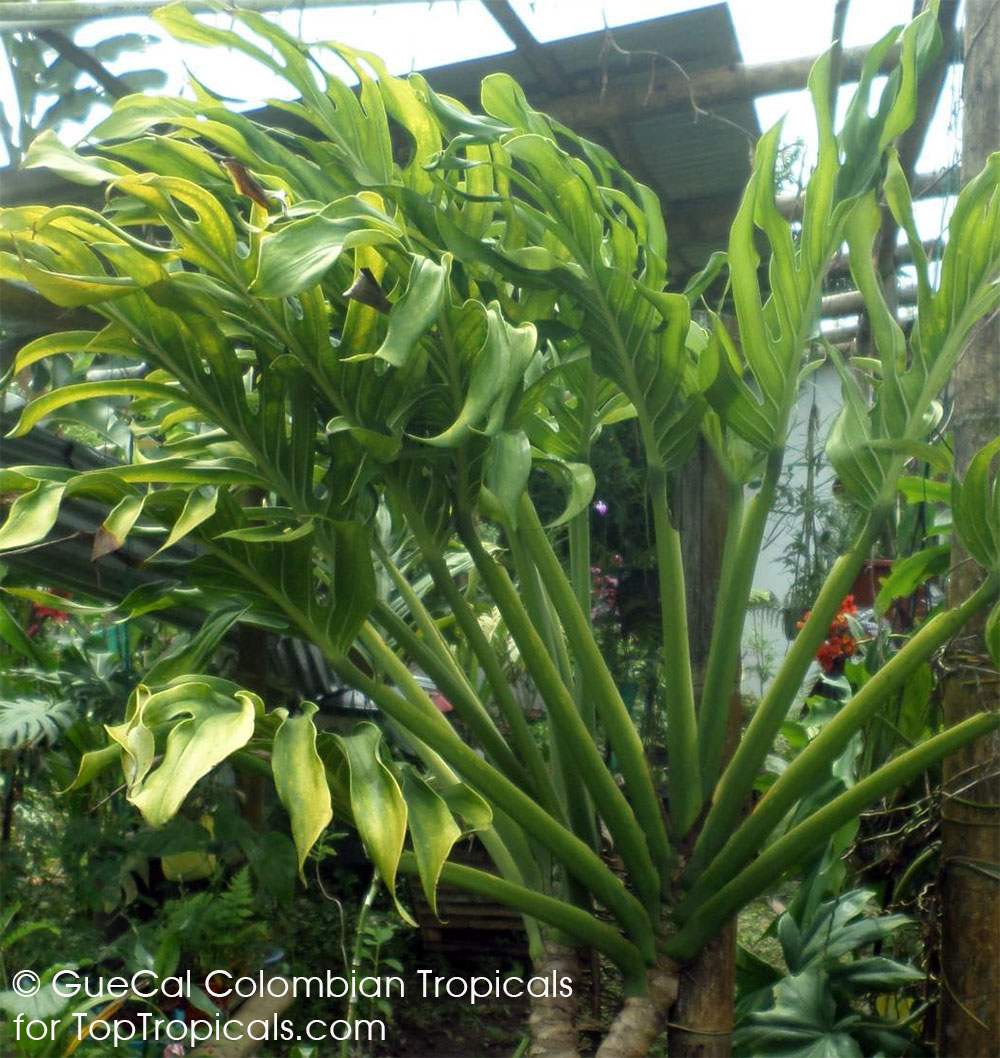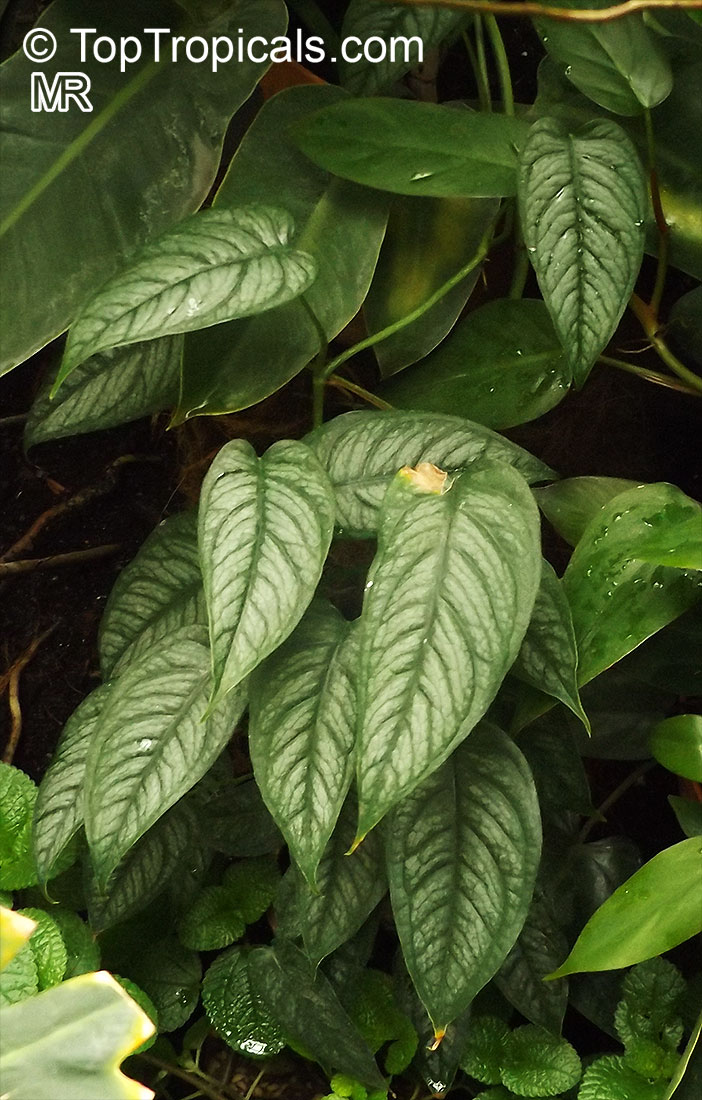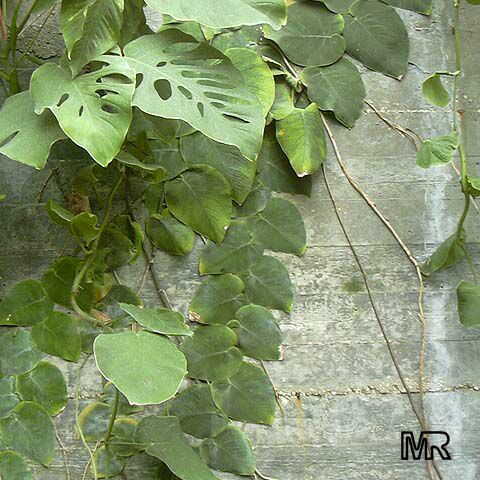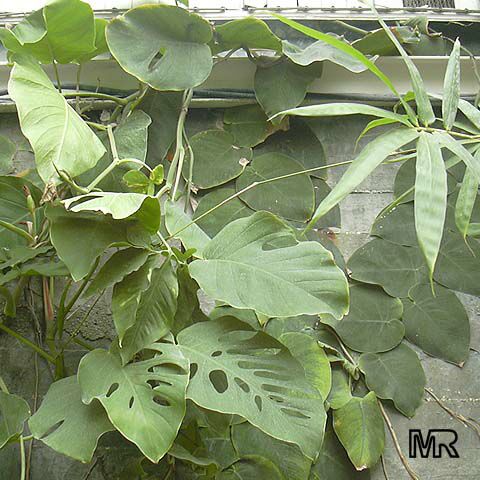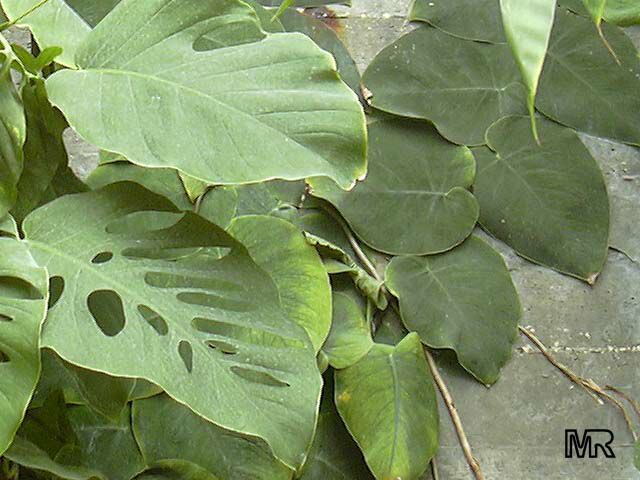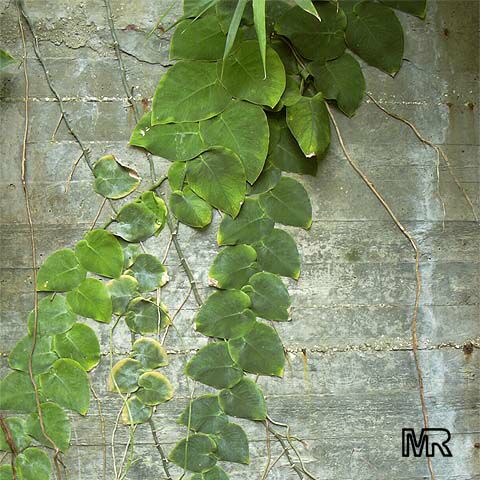Monstera - Plant Encyclopedia Results
Top Tropicals Plant Encyclopedia
| Number of plants found: 12 | Next | 
|
Go to page: | 1 | 2 |
Botanical names: Monstera acuminata, Monstera karwinskyi
Common name: Monstera
Family: Araceae
Origin: Central America, Mexico





Monstera acuminata is native to Central America, Mexico and is found in moist, evergreen forest or along rivers where they can clamber over other vegetation. The species thrives in semi-shade, although young stems may need some direct sunlight. This vine or creeper prefers a moist, well-drained soil and regular watering. In cold regions it can be grown in pots, where it will however require more careful watering and protection from extreme temperatures.
While Monstera acuminata is an epiphyte, it should be grown in soil for normal cultivation, rather than in baskets as an epiphytic. To prevent root rot, good drainage is essential. A light watering once a week should be sufficient. Provide your Monstera acuminata with sufficient light, but not too much direct sunlight. The optimal growing temperature is around 70°F. Keep the soil around the plant just moist, not soggy. In cold regions, it is preferable to grow the Monstera acuminata in a pot. If planting in the garden, use a thick layer of mulch and mulch around newly planted specimens.
Monstera acuminata is a hardy plant and can be grown in USDA Zones 9-11. During the winter, it is best to keep the plant on the dry side.
Botanical names: Monstera adansonii, Monstera friedrichsthalii
Common name: Swiss Cheese Plant
Family: Araceae
Origin: Central America





Monstera adansonii is similar to Monstera obliqua but Monstera obliqua and Monstera adansonii are not the same species. There are many hybrids in cultivation between Monstera adansonii and Monstera obliqua.
Monstera obliqua leaves are as thin as a sheet of paper, when adansonii leaves are a bit rough. Obliquas leaves consist mostly of holes. Adansonii leaves are not as longitindial as obliqua's. The holes in adansonii cover generally half of the adult leaf.
The plants we have for sale are propagated from the exact plant you see on this picture. We do not have a named hybrid for it if the type of hybrid matters to you.
See Article about Philodendrons.
Recommended Fertilizer: SUNSHINE Robusta - Rapid Growth Booster
Botanical name: Monstera aureopinnata
Common name: Regal Ceriman
Family: Araceae
Origin: Central America





This large shrub is native to Central America, and grows 5-10 ft tall. Monstera aureopinnata prefers semi-shade and is quite hardy, being capable of surviving in USDA Zone 9-11. Without much effort in the form of pruning, this hardy plant develops impressive aerial roots and a full, lush canopy. With regular water and moderate fertilization, Monstera aureopinnata will thrive in almost any garden.
Monstera aureopinnata is an ideal choice for those who want the unmistakable leaf shape and foliage of the Monstera species, but don't have the space for a full-sized vine or creeper. It's easy to cultivate, and with minimal effort can look great even in cold regions.
When planting Monstera aureopinnata, it is important to ensure that the soil is light and well-draining to prevent root rot. The soil should also be kept moist, although not wet, with regular waterings and monthly fertilization. As this is a fast growing plant, it will need to be repotted at least once every few years.
For Monstera aureopinnata grown in a pot, it is important to ensure that it is not exposed to too much cold or frost, as this will impact the overall health of the plant. In addition, plenty of light and regular waterings are essential for growth. It is also beneficial to deep water the plant, especially during the winter months, to ensure that it does not dry out. If necessary, use a mild fertilizer to supplement the soil and promote healthy growth, but be sure not to overfeed.
Botanical names: Monstera deliciosa, Philodendron pertusum
Common names: Swiss Cheese Plant, Fruit Salad Plant, Ceriman
Family: Araceae
Origin: Mexico and Guatemala








A jungle climbing relative of the philodendron from Mexico and Guatemala. It is seen in gardens in tropical and subtropical areas, growing well in partial sun or shade. The plant begins bearing after three years. Popular as a houseplant, it seldom fruits in the home. The large pinnate leaves are perforated with oblong or oval holes, hence one common name. The 9", dull, deep green, cone-like fruit is actually an unripened flower spike, covered with hexagonal scales that dry out and separate as the fruit ripens from the base upwards, revealing the white pulp. It takes a little longer than a year to mature to an edible stage. The fruit tastes kind of like a cross between a sugar apple and a pineapple.Very perfuming smell and taste! It's so amazing, can't figure the consistency, but totally a pineapple sugar apple cross... But wash the black specks off before eating - they will sting your tongue. Unripe fruit, if eaten causes irritation to the mouth and throat because of the oxalic acid. It can be induced to ripen by picking when the base has started to wrinkle and wrapping in a bag for a few days. When unwrapped, the scales should have separated.
Another interesting characteristic of this plant is that the seedlings, upon germination, will grow in the direction of the darkest area (not just merely away from light) until they encounter the base of a tree to grow on. They will then begin to climb toward the light which is generally up into the canopy of the tree upon which it is growing. Propagated by cuttings of mature wood or air layering.
See Article about Philodendrons.
Recommended Fertilizer: SUNSHINE Robusta - Rapid Growth Booster
Botanical name: Monstera dubia
Common names: Penanola, Shingle Plant
Family: Araceae
Origin: Tropical America




A tropical plant that produces heavy jointed stems which root at the nodes. The young leaves are 4 to 5 inches long; waxy; entire; and deeply lobed when mature.
Monstera dubia is a well known shingling Monstera with such a desirable growth
habit when juvenile that most enthusiasts barely recognize the adult form. This plant produces quarter size and up leaves with max size of the shingling leaves being around 8 inches. At this point, the plant pulls loose from its support and begins producing leaves which can be more than 2 feet long!
Recommended Fertilizer: SUNSHINE Robusta - Rapid Growth Booster
This is a hot seller, limited quantities. This is small plant. Demand is very high, these plants sell faster than we can grow them bigger. Please do not order if size matters to you. Contact us before making purchase if you have any questions
Leaves of this plant are very fragile and may be slightly damaged during transportation which does not hurt new growth. Trim as needed and more new leaves will grow.
Botanical name: Monstera karstenianum
Common name: Monstera Peru
Family: Araceae






Monstera karstenianum, also known as Monstera Peru, is a fast-growing plant from the Aroid family that makes an ideal ornamental when grown as an epiphyte or pot plant. It prefers subdued light and partial shade. It is moderately drought-tolerant and requires regular watering, but it is not suited to overly wet or dry soils.
Monstera karstenianum can be grown in cold regions by planting it in a pot. However, it needs to be brought indoors and placed in a warm location during winter. During winter, it should be watered sparingly, about every four weeks. The potting mix should be kept evenly moist but not soggy. It is essential to use a soil-less potting mix with a light, airy texture that drains well.
This Monstera is a climber with bullate leaves that are spectacularly puckered and iridescent, and their texture and design pop off the leaf. The plant has leather-like green leaves that feel like braille on your fingertips. The stems are long and twist around like vines.
Botanical name: Monstera obliqua
Common names: Monstera, Window Leaf, Swiss Cheese Philodendron
Family: Araceae
Origin: Brazil






Unusual form of Monstera. Leathery foliage. Makes an interesting indoor specimen. Slow growing. Leaves have oval holes. It is sometimes referred to as the juvenile form of Monstera adansonii. Very close related species - Monstera adansonii. There are many hybrids in cultivation between Monstera adansonii and Monstera obliqua.
Monstera obliqua leaves are as thin as a sheet of paper, when adansonii leaves are a bit rough. Obliquas leaves consist mostly of holes. Adansonii leaves are not as longitindial as obliqua's. The holes in adansonii cover generally half of the adult leaf.
Botanical name: Monstera pinnatipartita
Common name: Nido Nodo
Family: Araceae
Origin: Columbia




The Monstera pinnatipartita is a large shrub or vine, its growth reaching up to 5-10 feet in length. As a native to the Columbia region, it prefers semi-shaded areas, and regular watering. It does best when grown in USDA Hardiness Zones 9-11.
When planting, it is essential that Monstera pinnatipartita is provided with the right conditions. A well-draining, humus-rich soil is ideal, and potting the plant in the correct size pot that is not too small is also essential. As with most plants, the Monstera pinnatipartita needs full sun or a bright, semi-shaded area.
Watering guidelines for this plant are straightforward, with the soil needing to be kept evenly moist but not waterlogged. During the growing season, regular watering is needed as the Monstera pinnatipartita is particularly thirsty, especially when it is young. Established Monstera pinnatipartita plants can be watered less in the winter when the plant is not actively growing.
For those living in colder regions, growing the plant in the pot is the best option. In this case, it is important to take extra care to make sure the plant's root system is insulated to protect it from cold weather. The pot should ideally be placed in a sheltered area, away from strong winds and out of any frost pockets. In the winter, it is also essential to keep the soil of the Monstera pinnatipartita moist but not too wet.
Finally, the Monstera pinnatipartita requires occasional trimming, with regular pruning of dead stems and leaves. This will keep the foliage looking its best. Overall, the Monstera pinnatipartita is an easy-care plant that looks great in any garden.
Botanical name: Monstera siltepecana
Common name: Swiss Cheese Plant
Family: Araceae
Origin: Central America






Monstera siltepecana has very unique leaves. While young the foliage is a blue green with silver markings. As it matures these markings fade and the leaves become much larger and start to form holes.
Botanical name: Monstera tenuis
Common name: Monstera
Family: Araceae
Origin: Costa Rica





Monstera tenuis is a common houseplant that originates from the tropical forests of Costa Rica. This ornamental foliage is recognisable for its long, vibrant green leaves with delicate fenestrations. Its exotic appearance is mostly appreciated for its striking look in a modern living room or bedroom.
When it comes to Monstera tenuis care, this vine prefers semi-shady locations and regular water, making it an ideal houseplant for many homes. Its ability to tolerate both bright and moderate light makes it a great option for busy people, who can't dedicate too much time to plant care or spend the day monitoring light requirements.
Monstera tenuis performs best in climates with a USDA Zone ranging from 9 to 11, although it is quite hardy and can survive in colder temperatures when kept in a pot. When growing in cold regions, make sure to keep the Monstera tenuis in a pot and bring it inside when temperatures drop. This species of Monstera should be placed in a bright spot and watered regularly, paying attention to the soil moisture. Additionally, regular feeding and trimming of leaves and shoots is necessary in order to maintain a desirable shape.
Overall, Monstera tenuis adapts well to indoor environments and provides a unique look with its large and eye-catching foliage. For those looking for a low-maintenance, yet exotic houseplant, Monstera tenuis could be an ideal option.
| Next |  |
Use link to repeat this search:
https://toptropicals.com/cgi-bin/garden_catalog/cat.cgi?find=Monstera&search_op=and&keyword_op=and&language=e&number=10
&no_change_lang=1&user=tt&sale=1&first=0
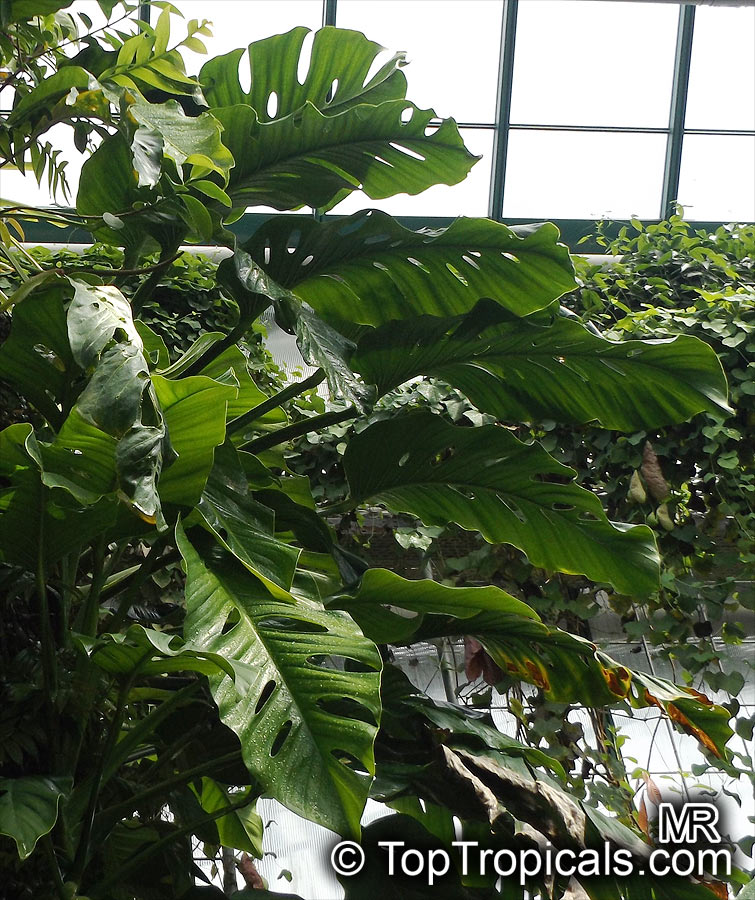
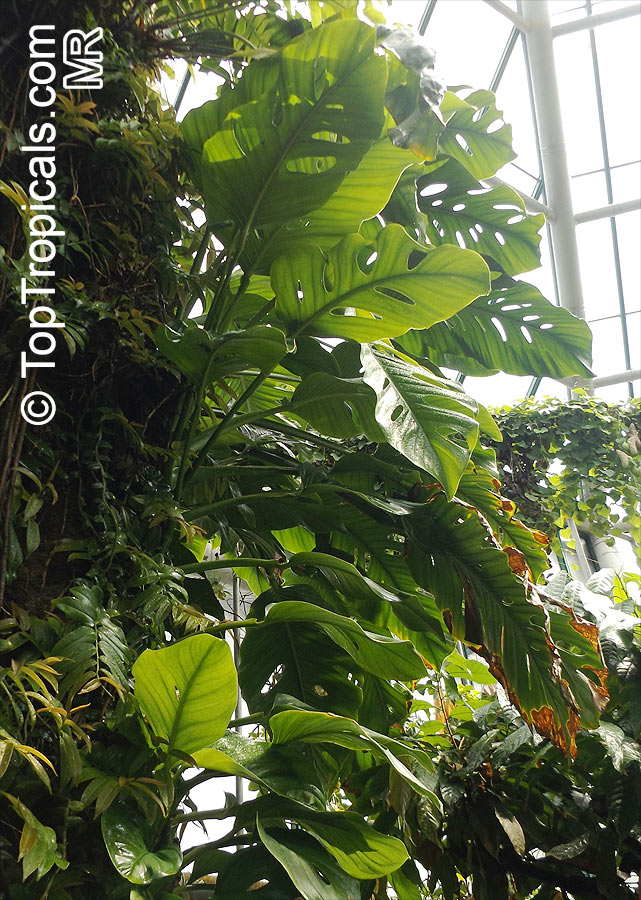
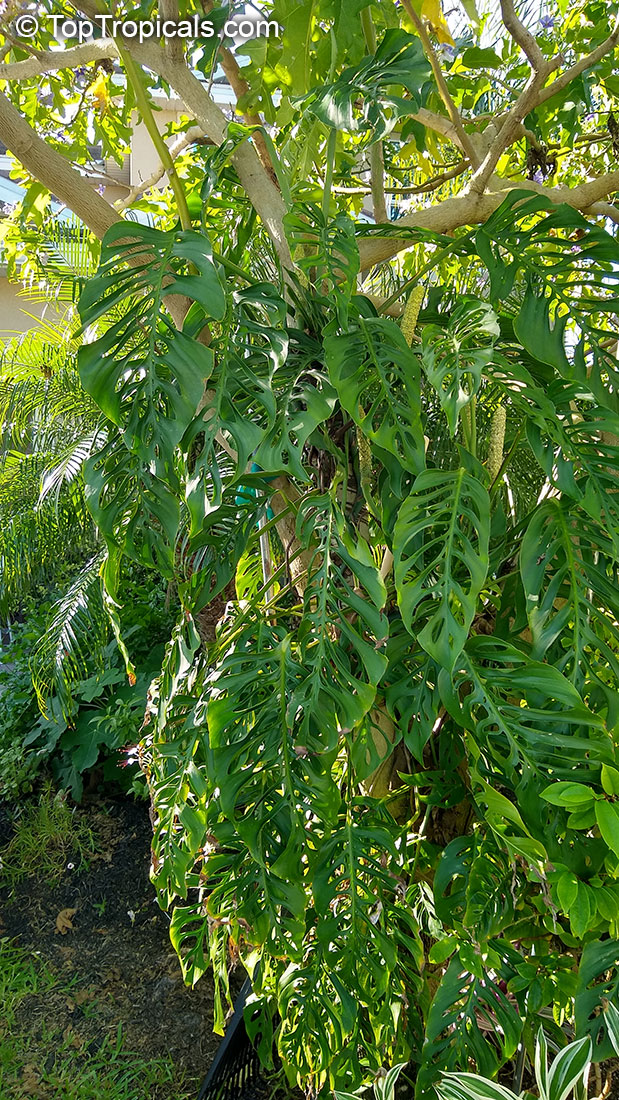
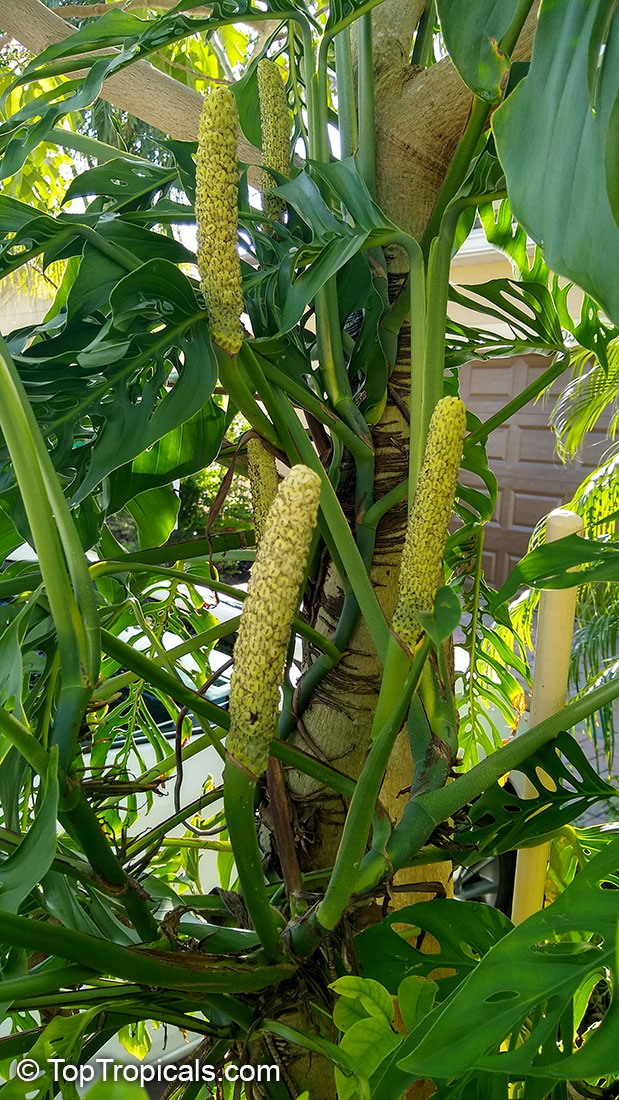
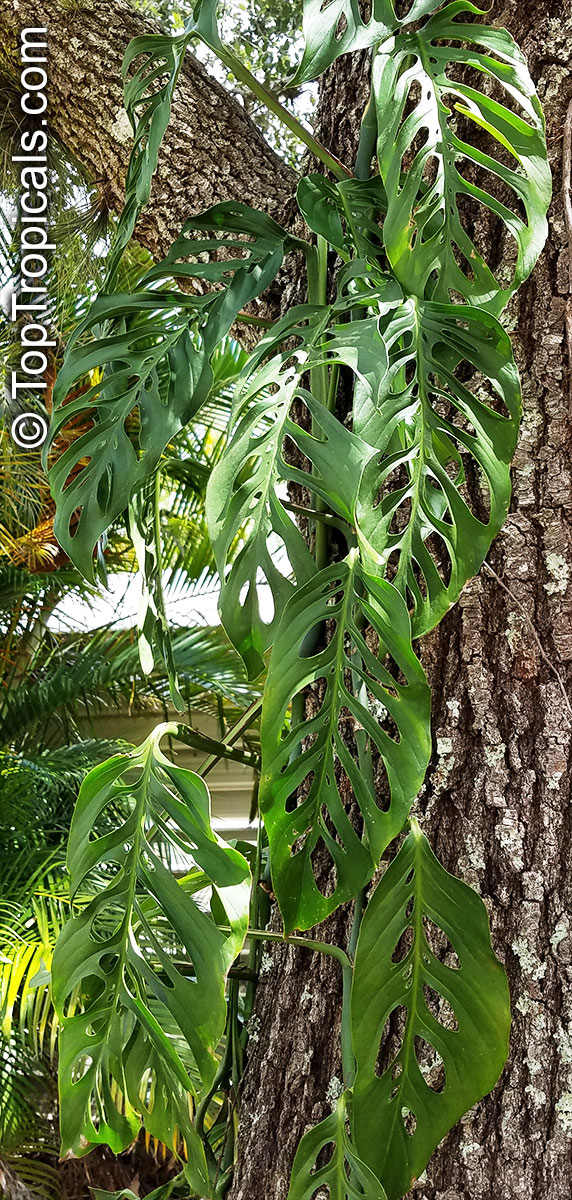
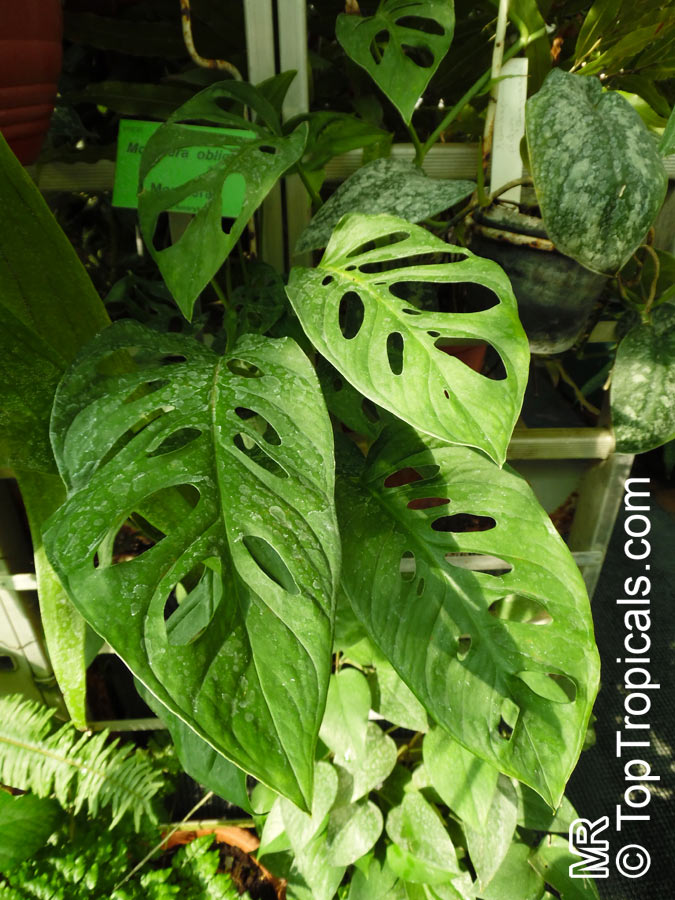
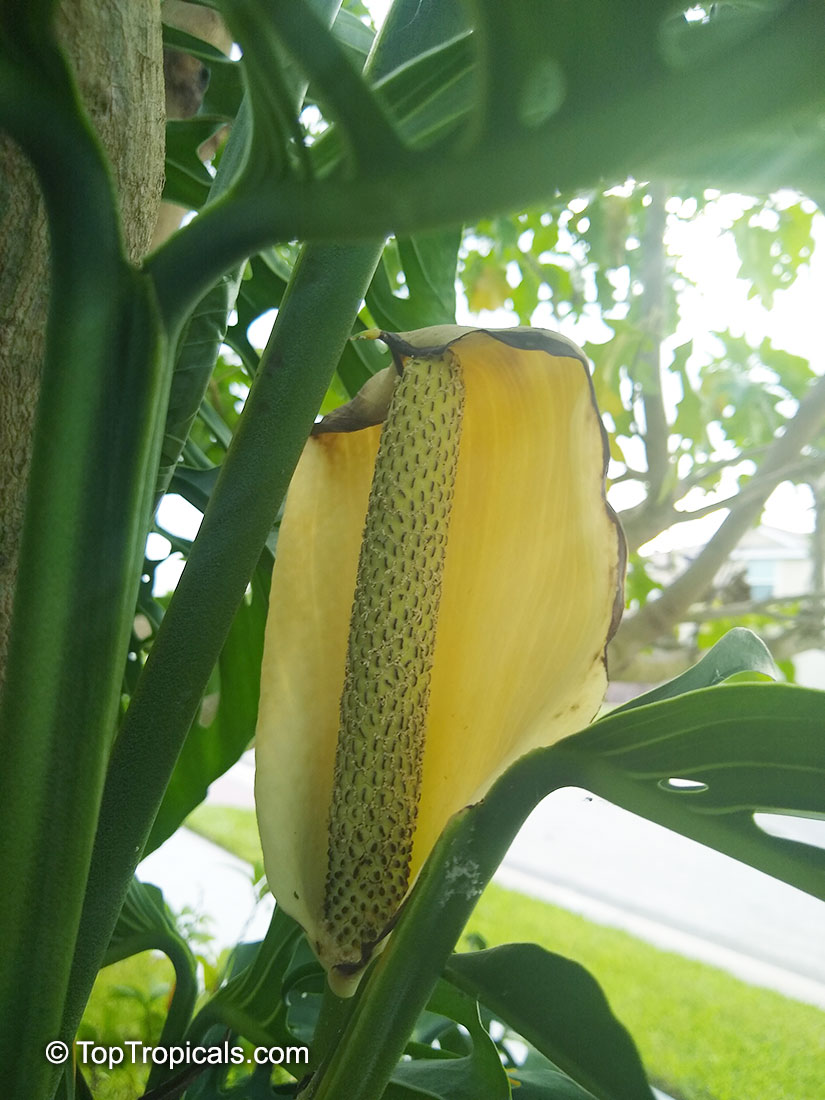
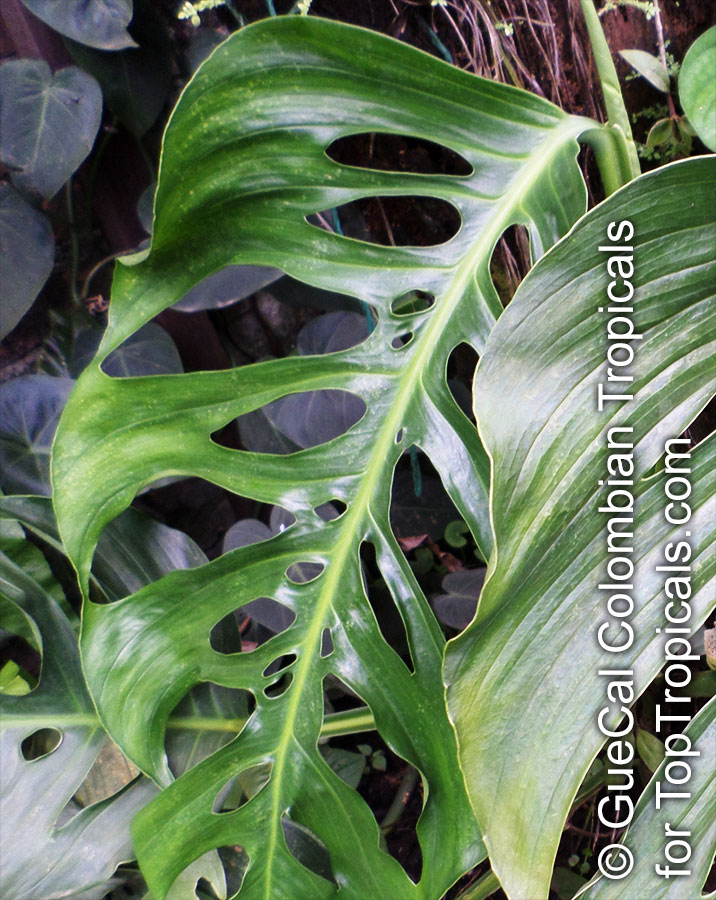
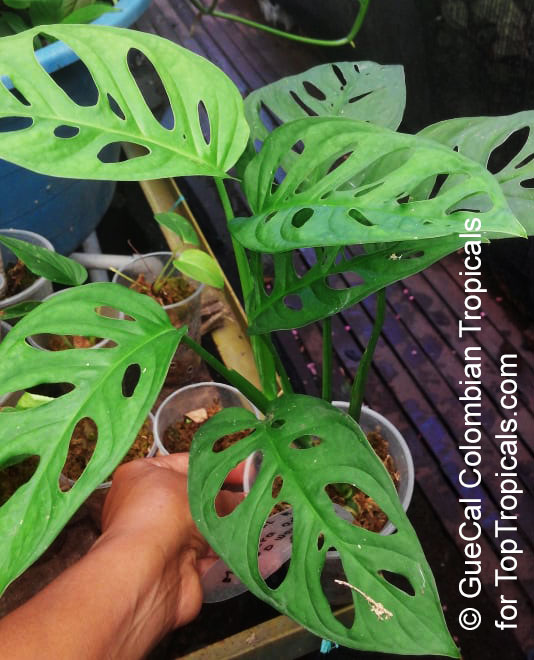
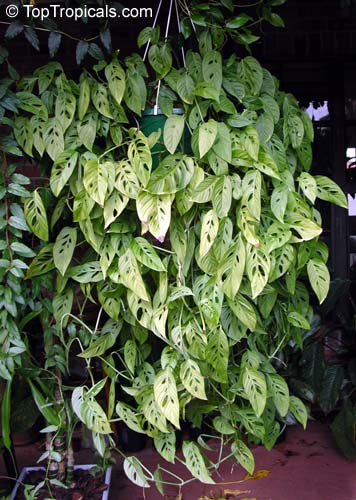
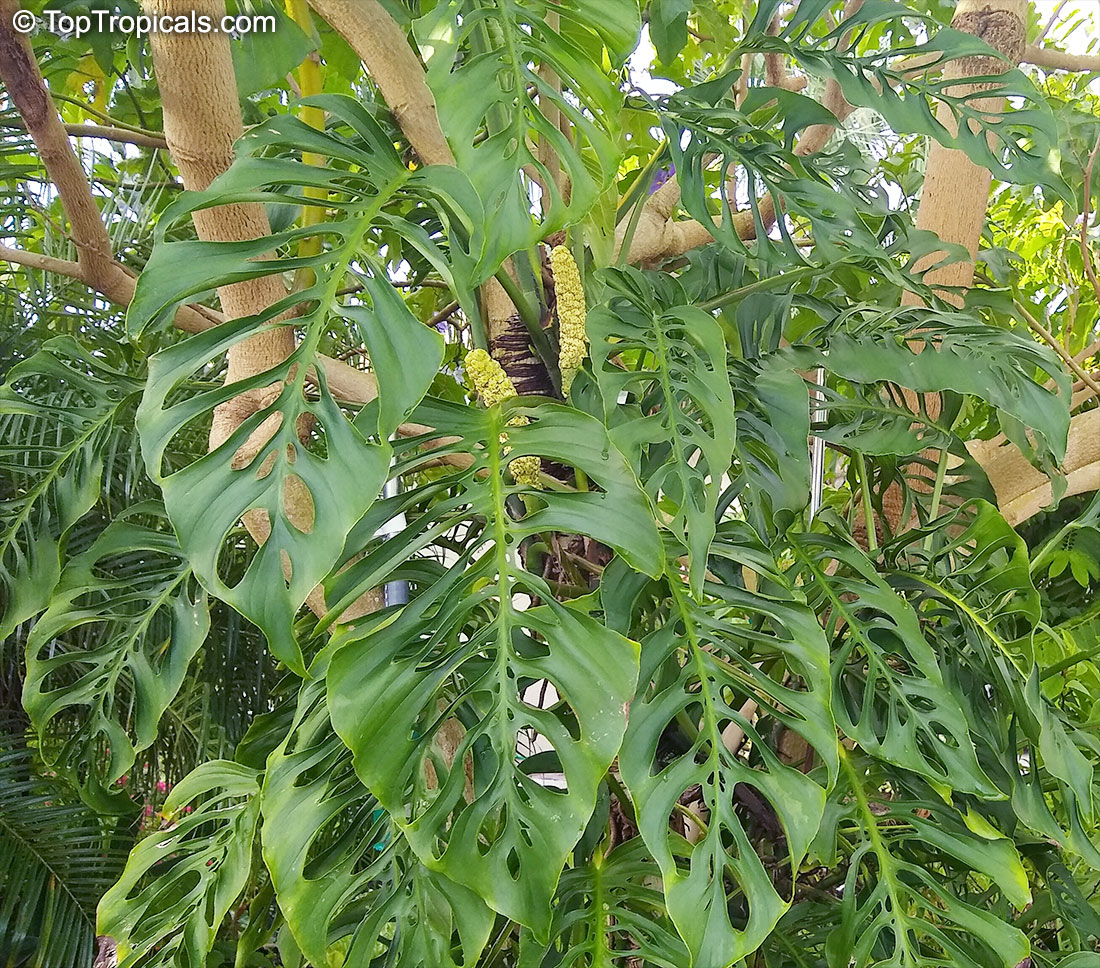
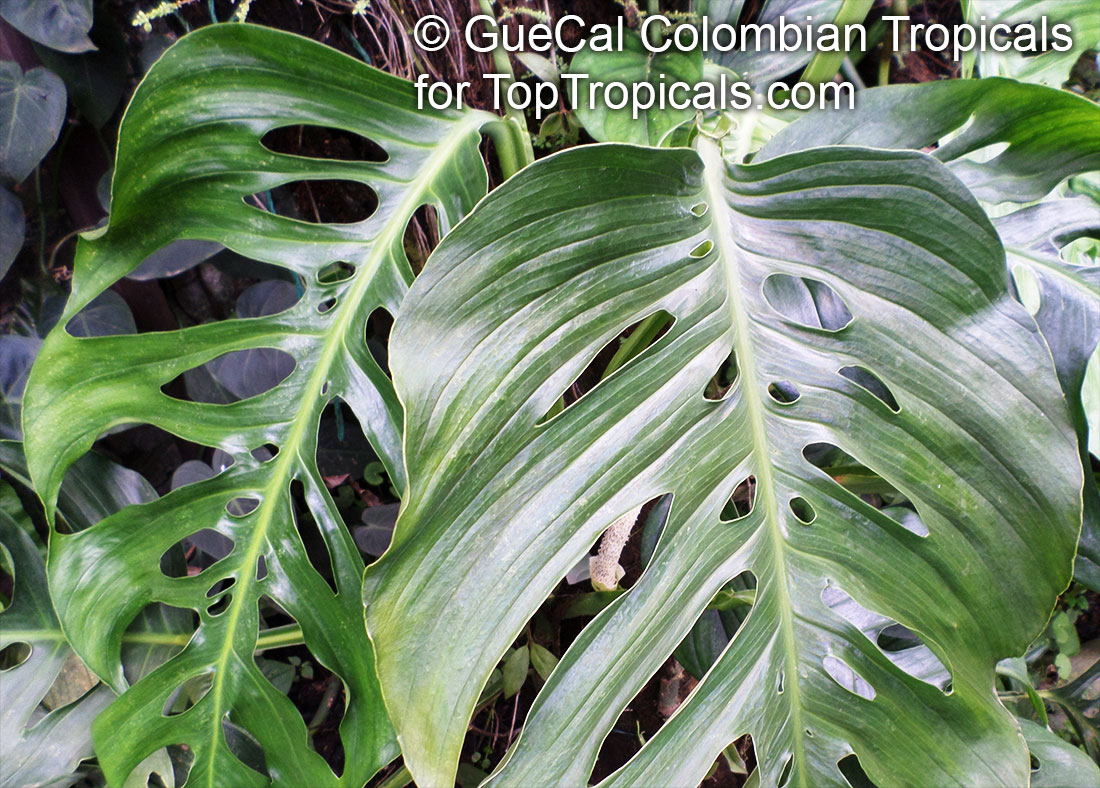

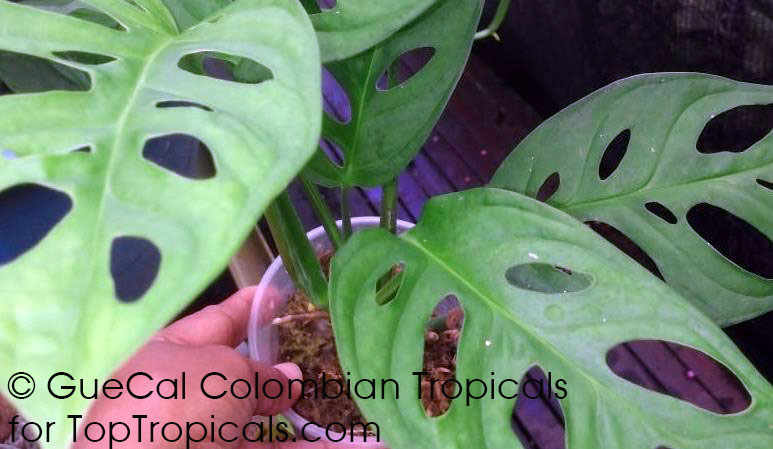
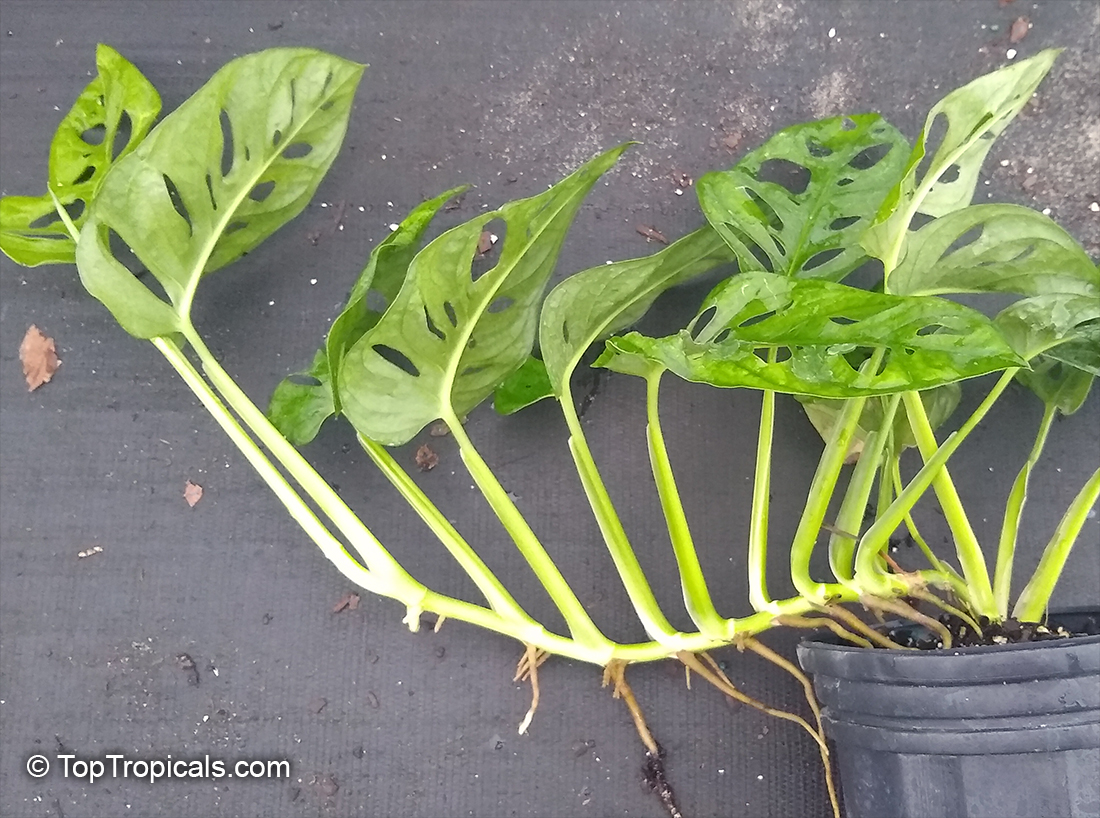
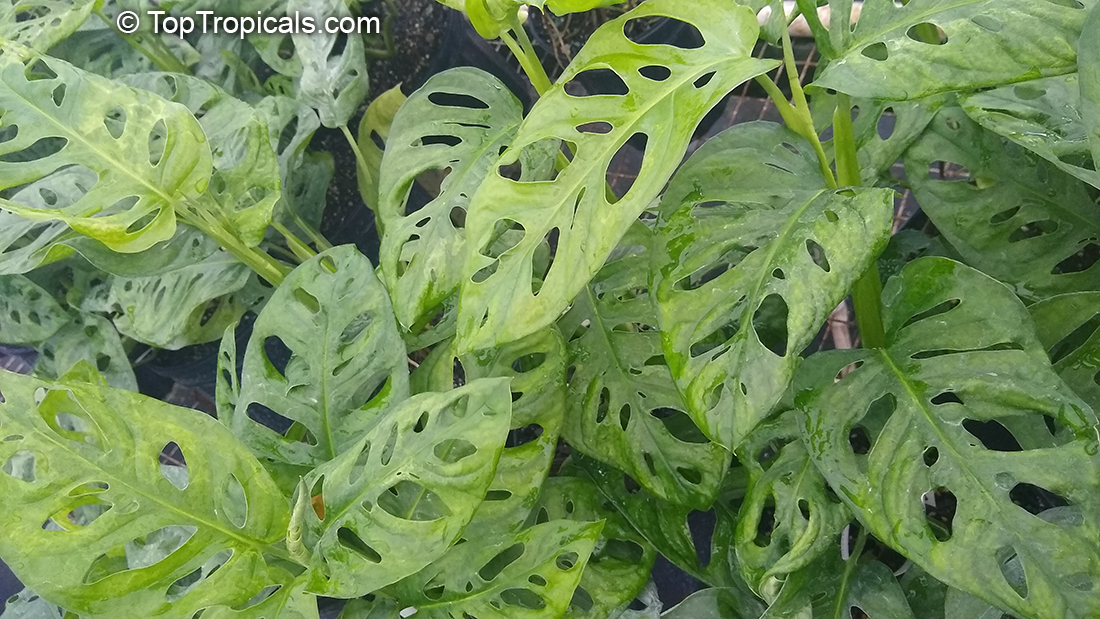
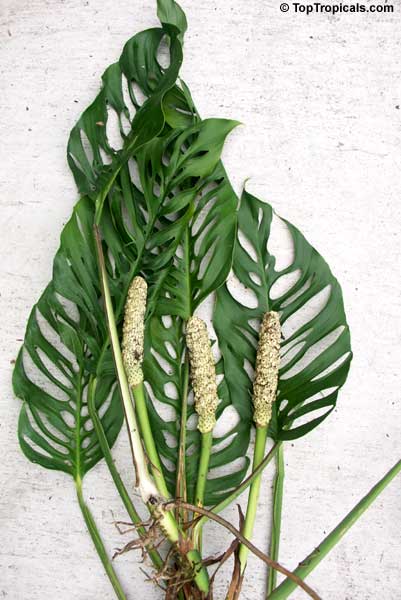

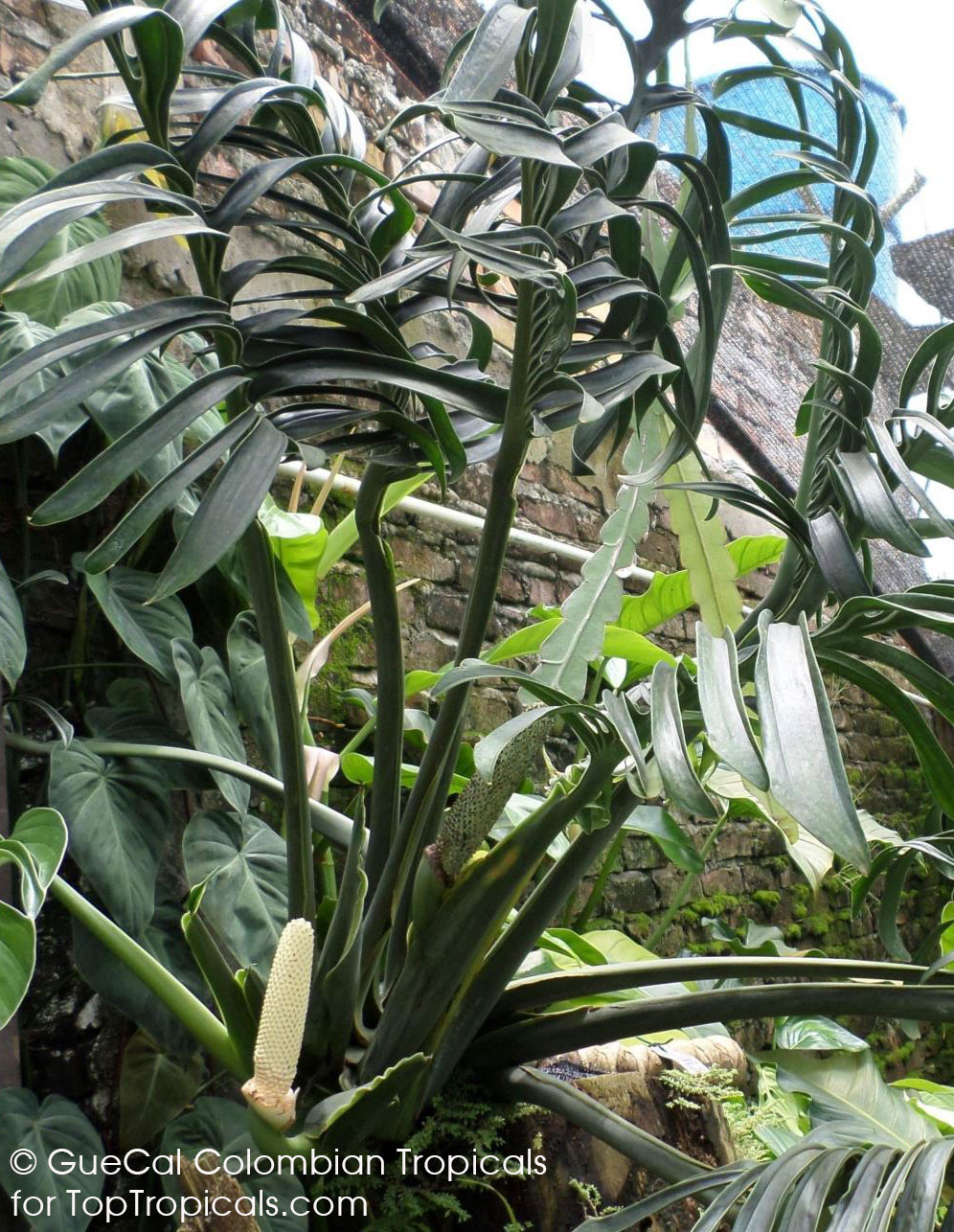
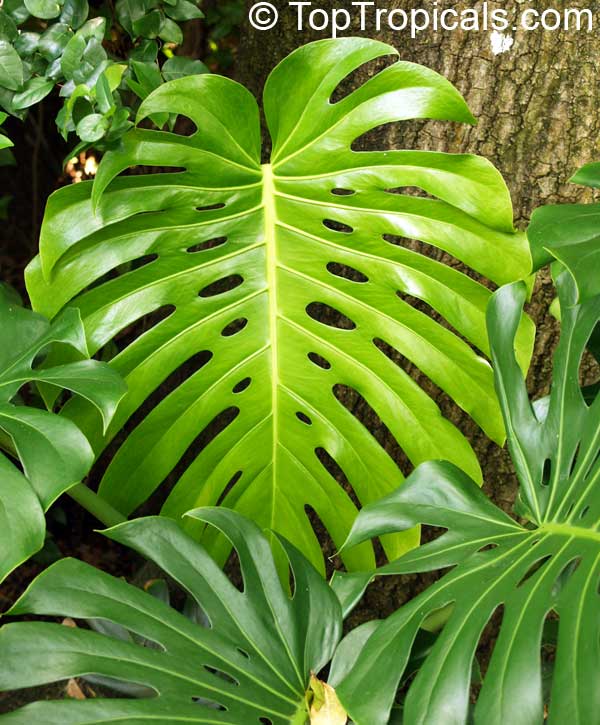
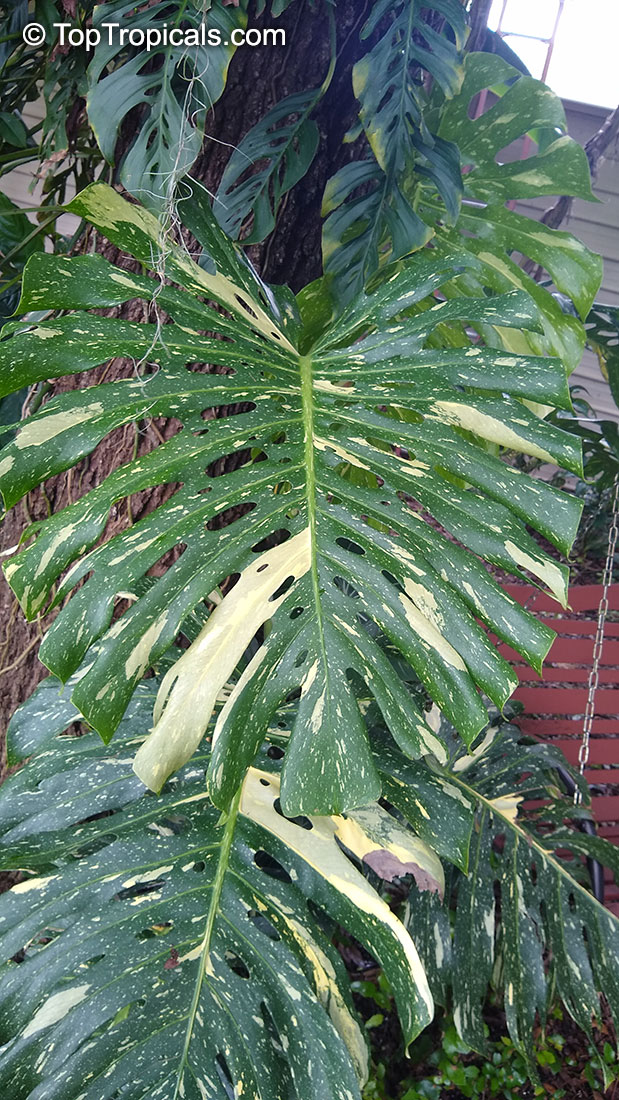

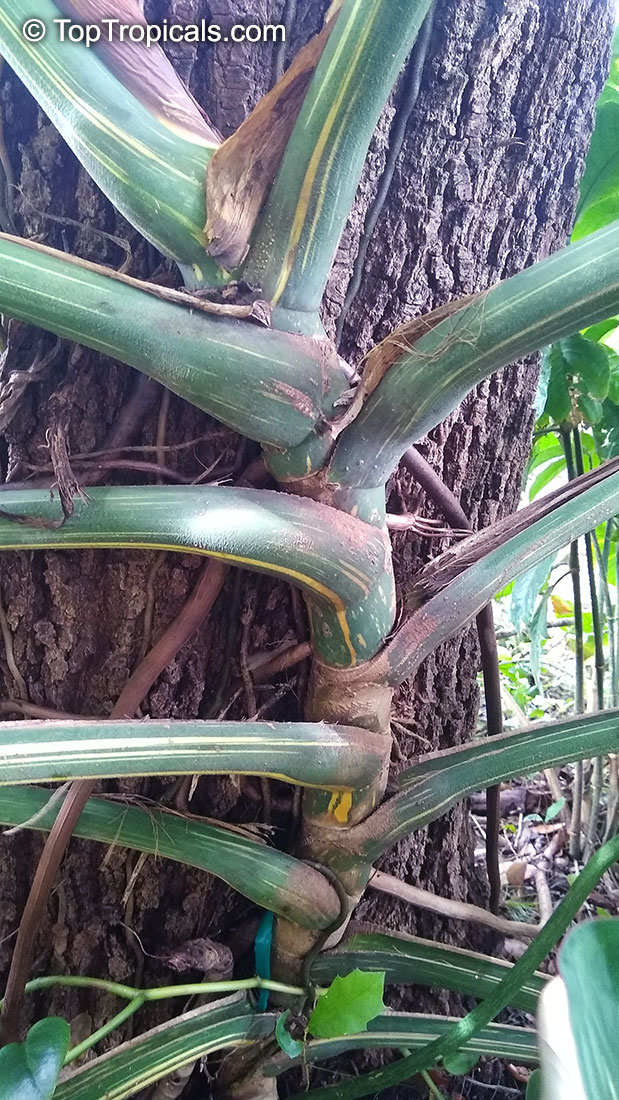
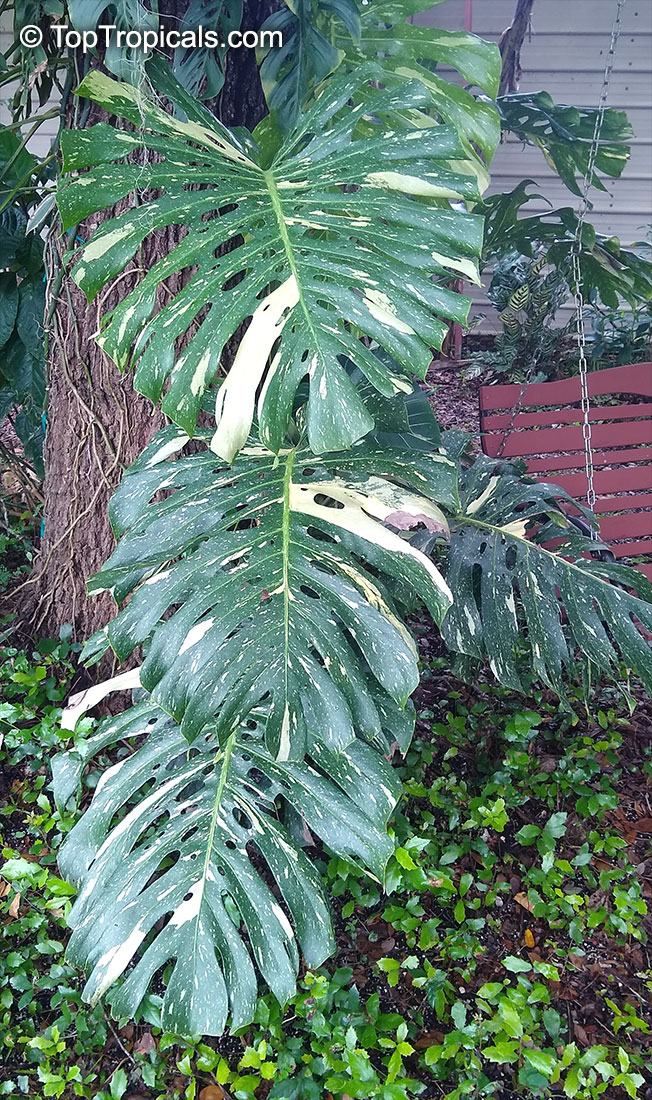
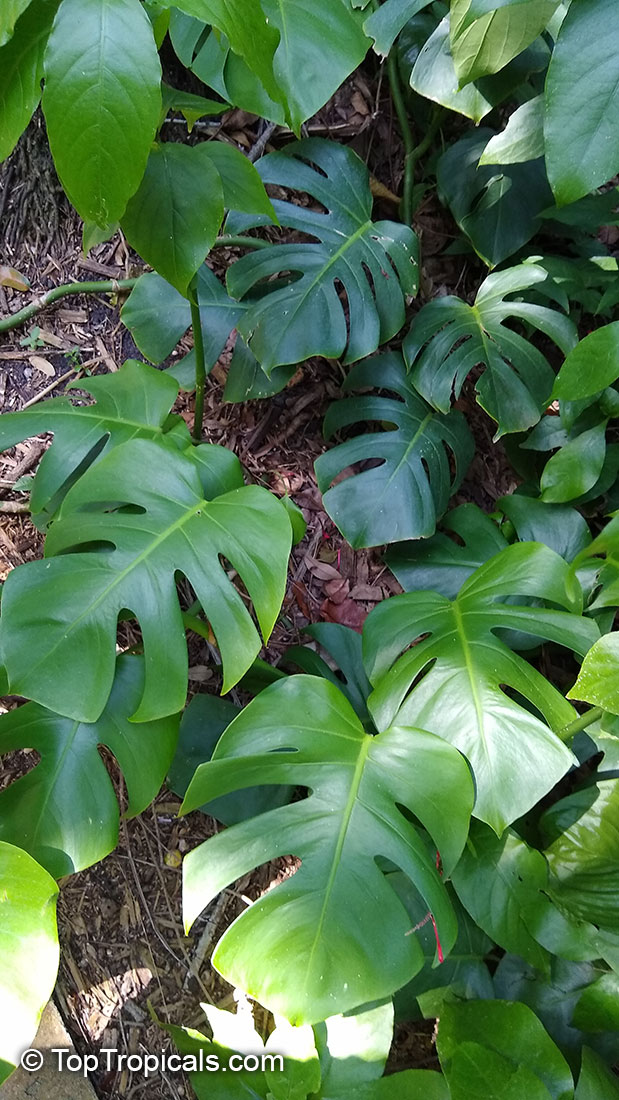
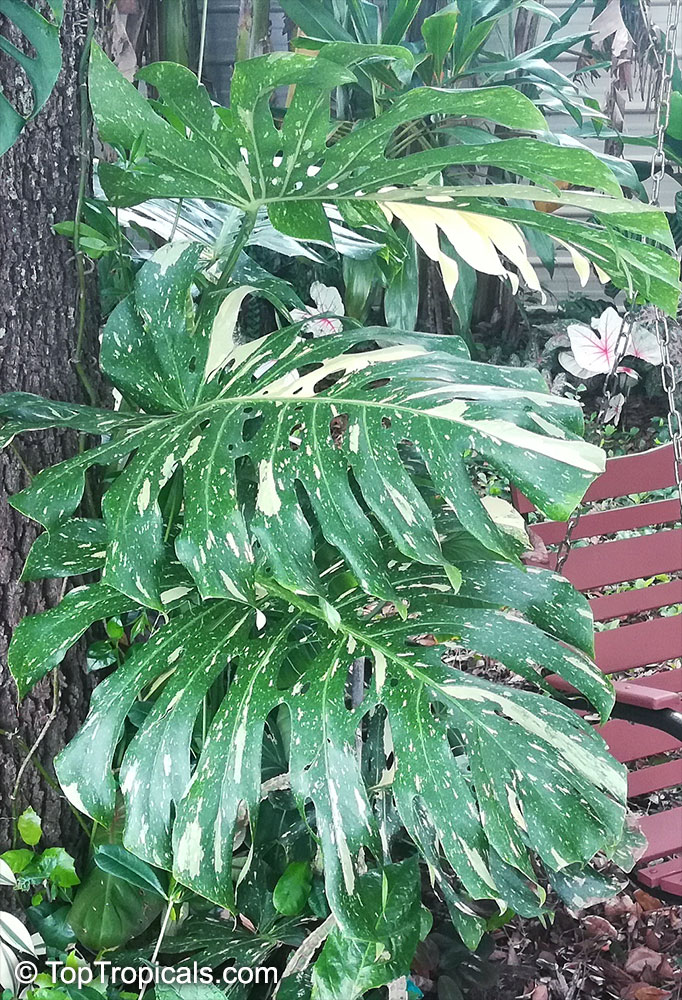
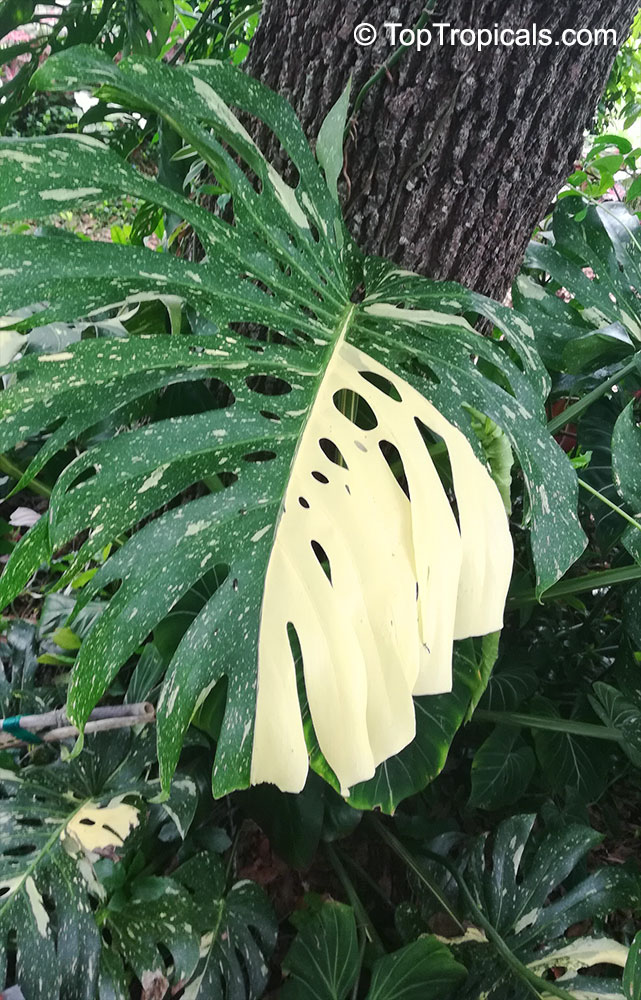
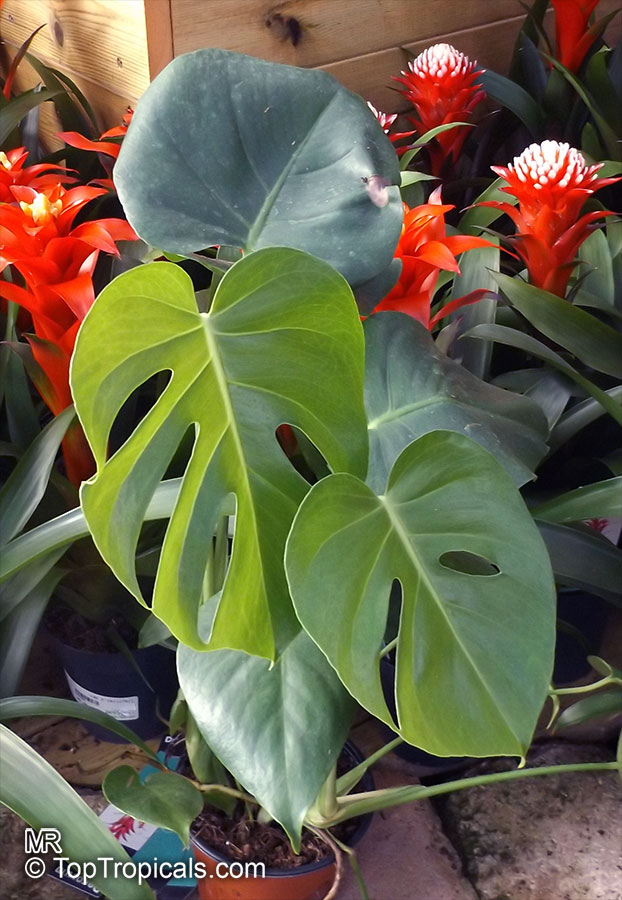
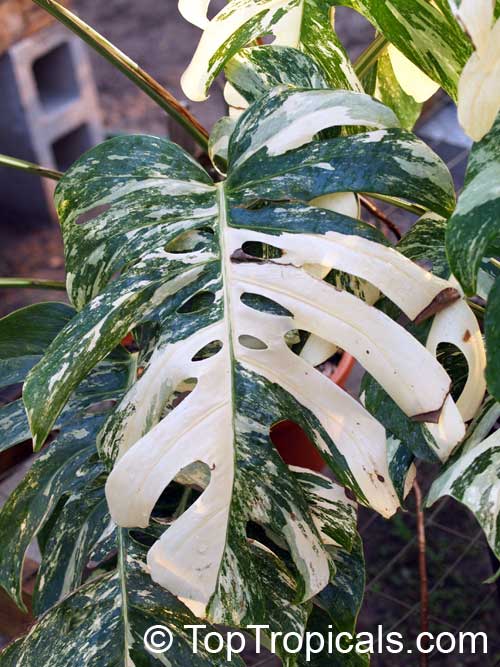
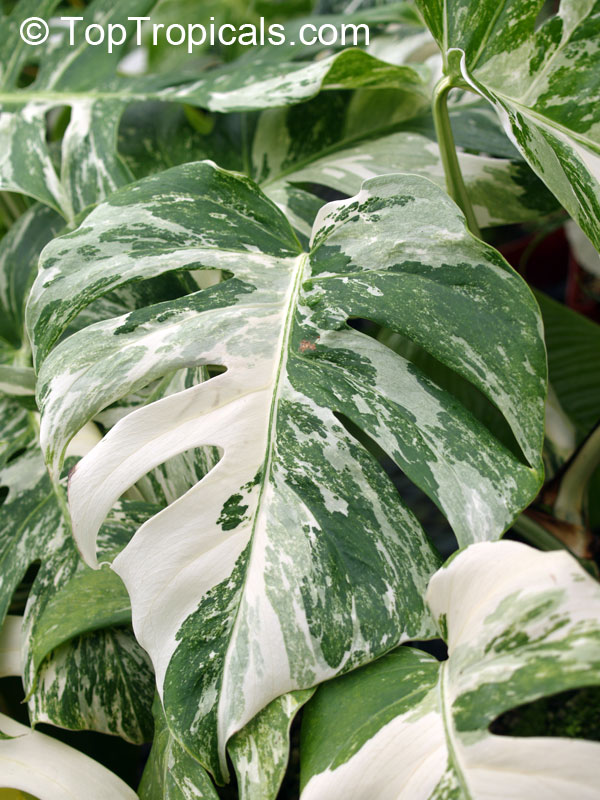
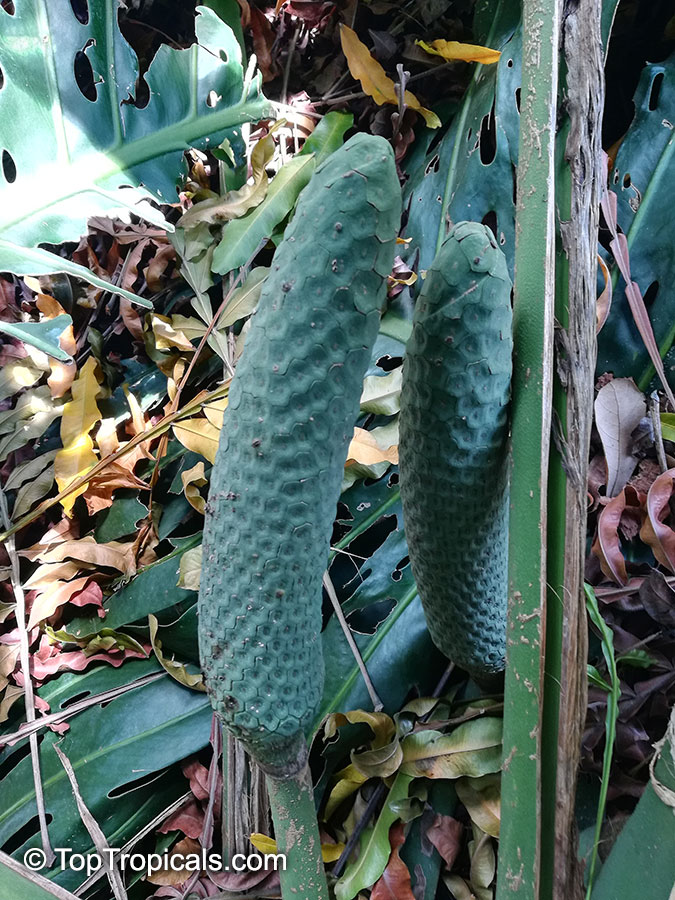

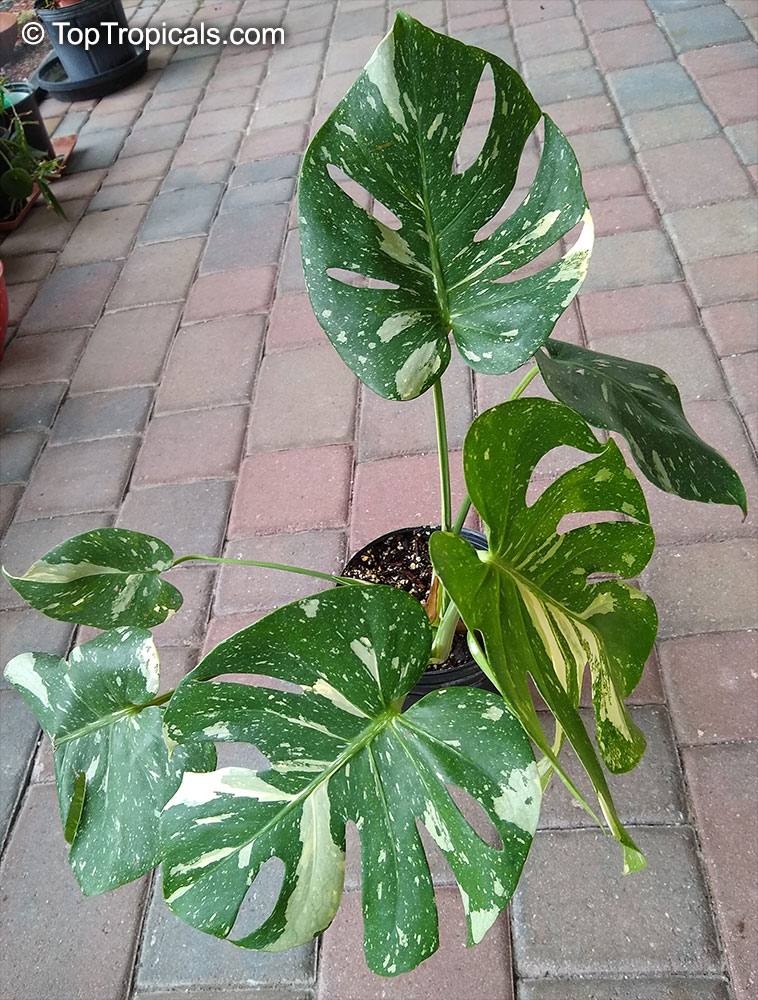
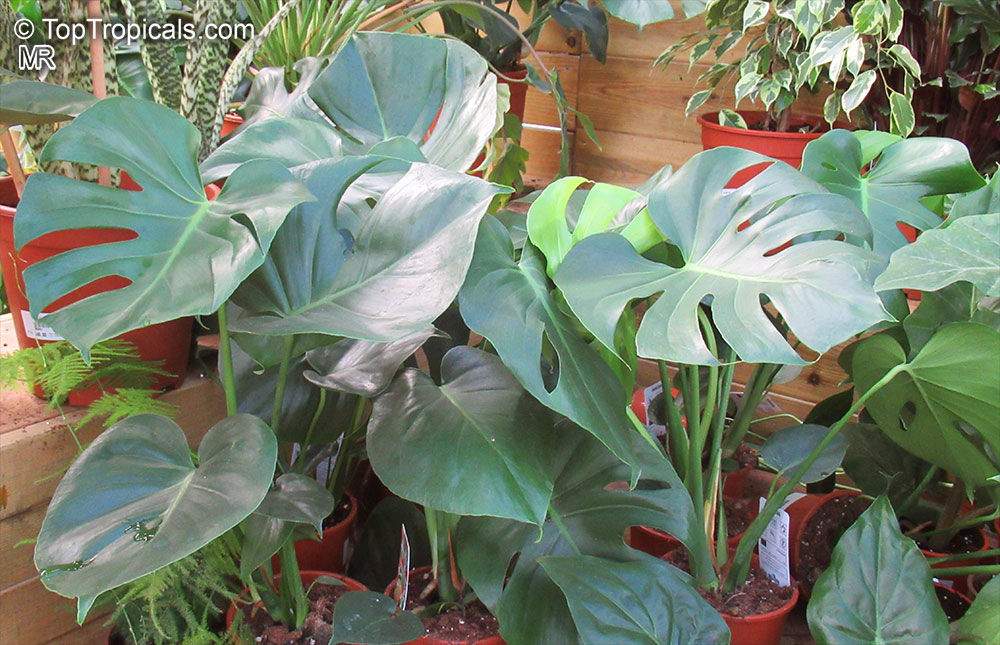
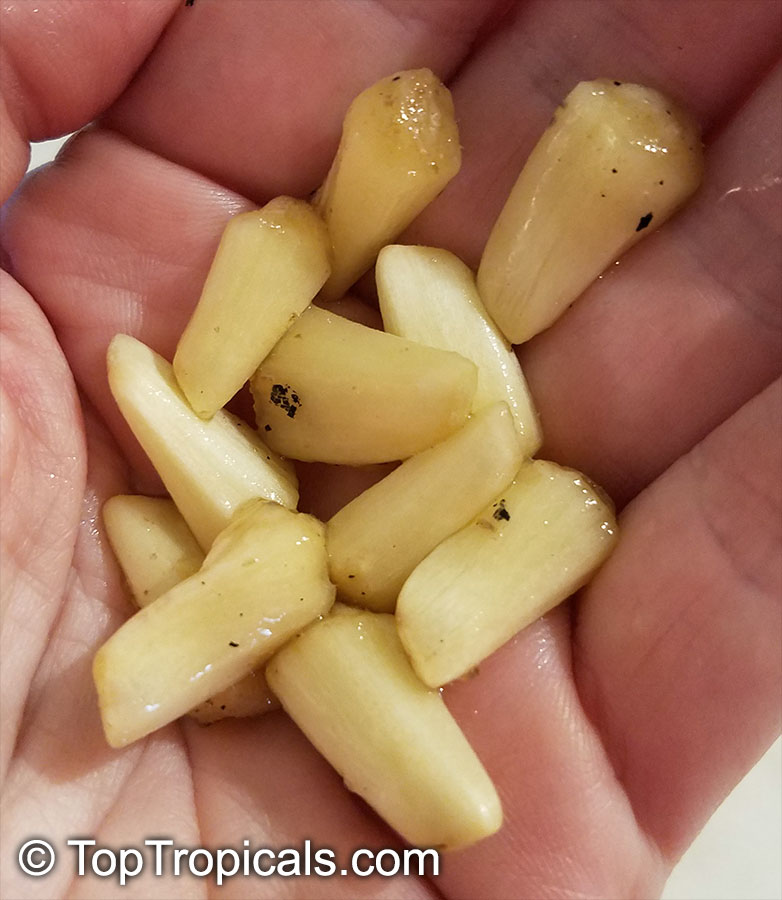
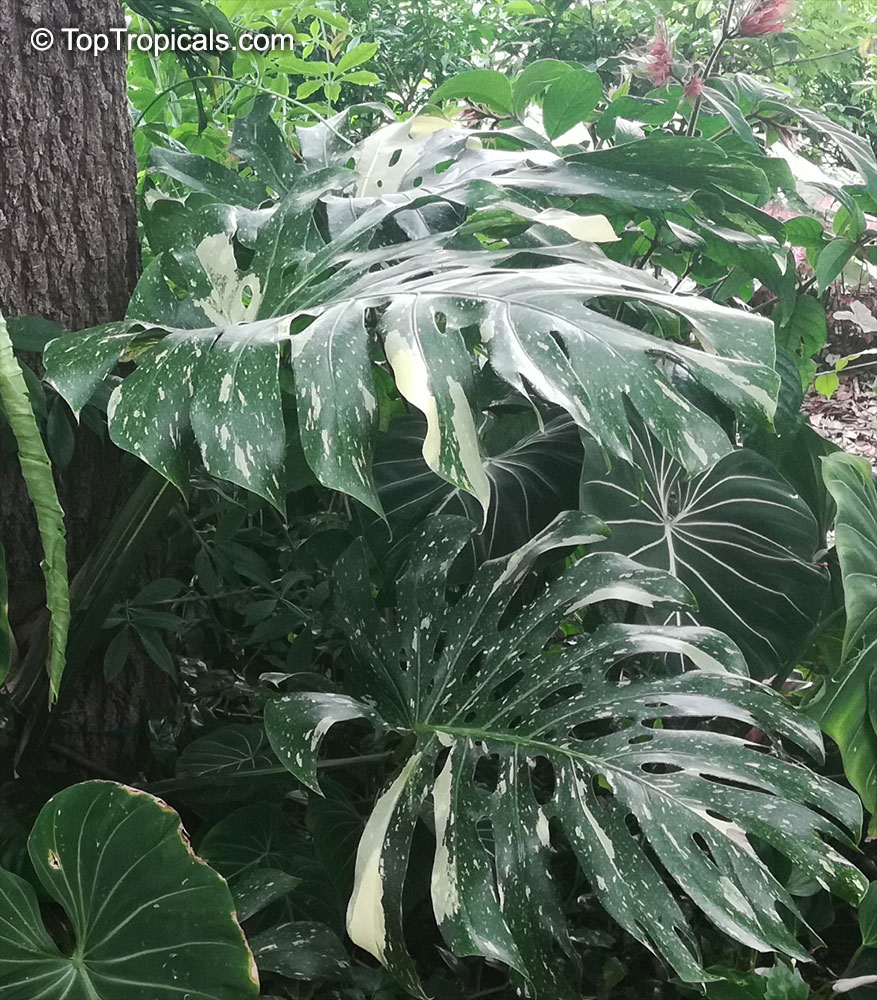
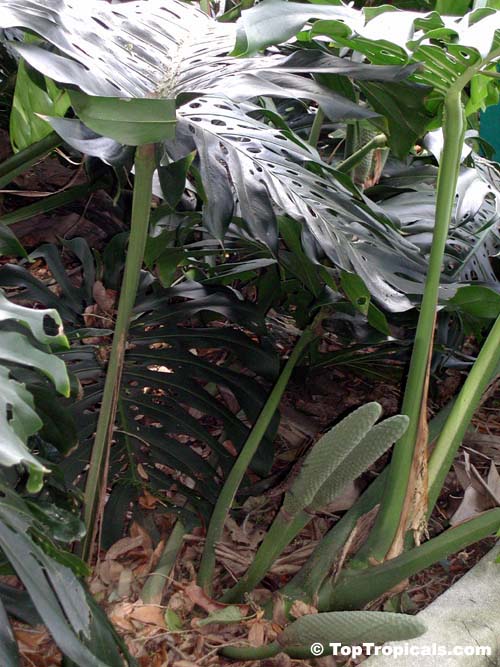

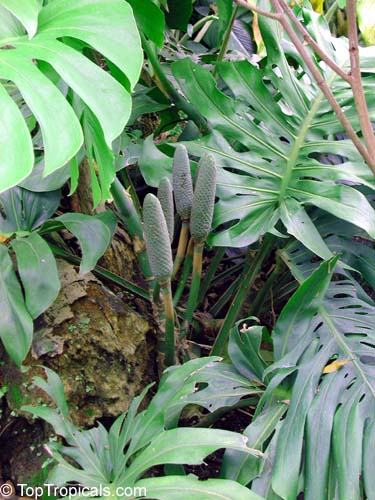
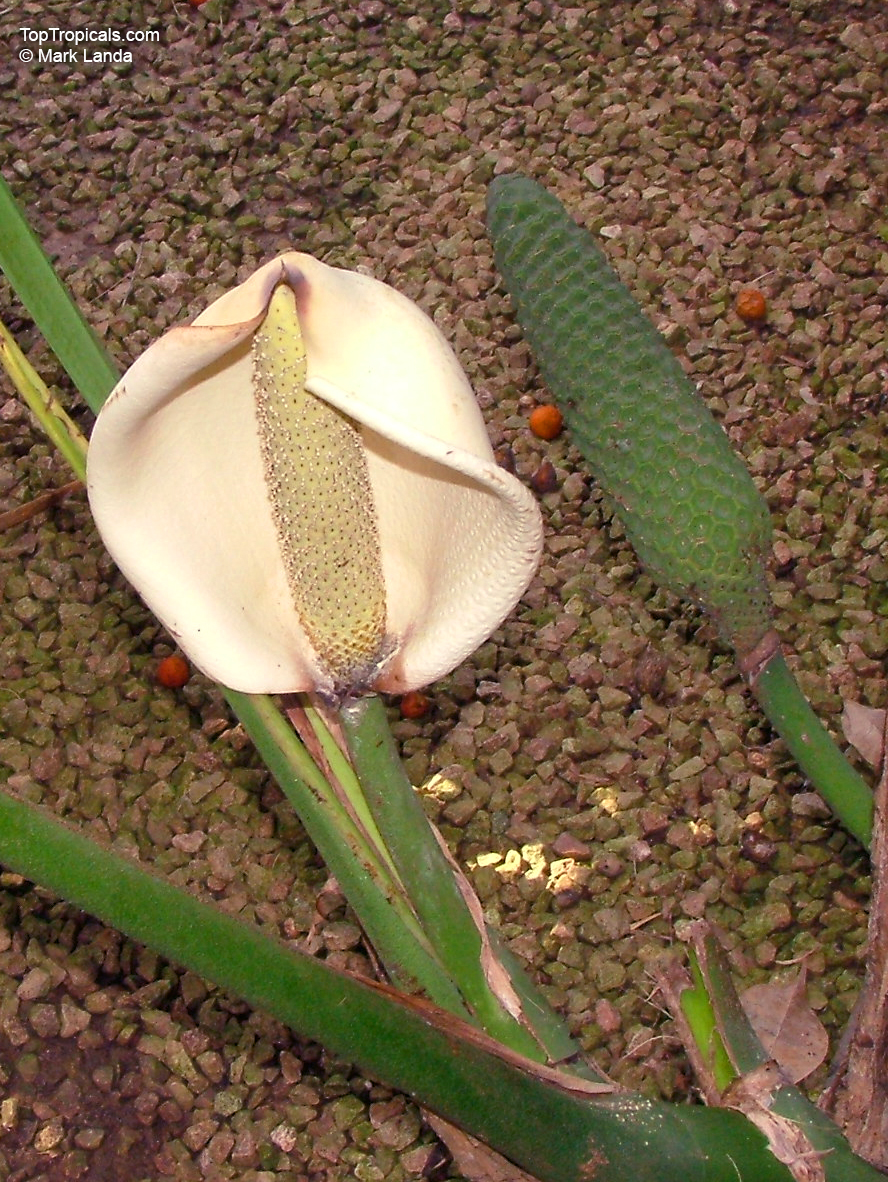

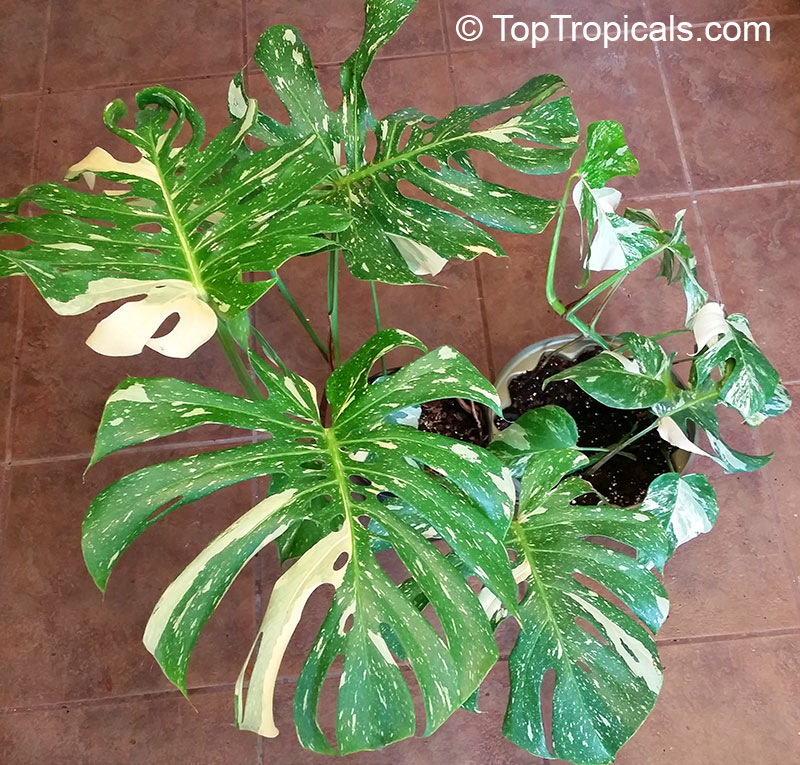
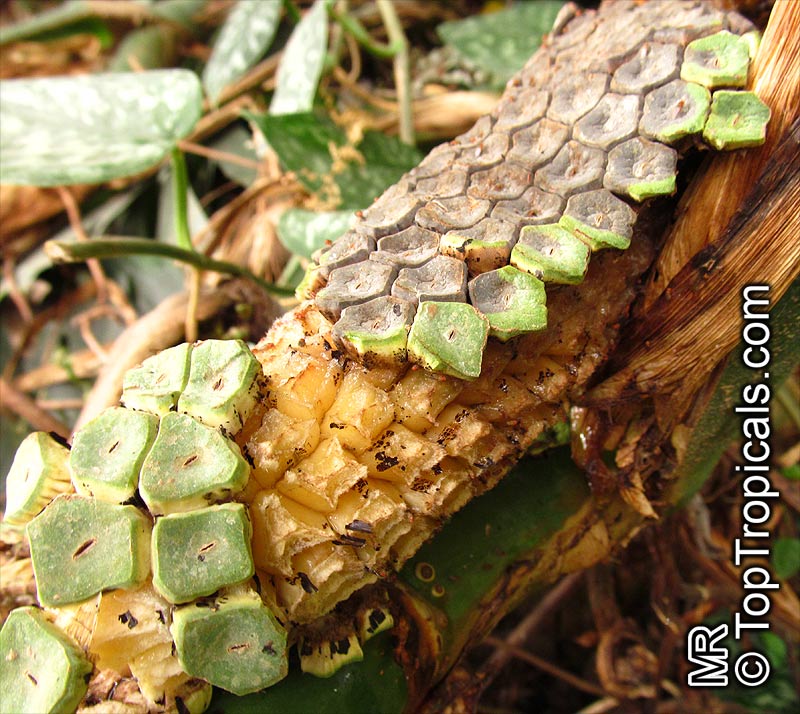
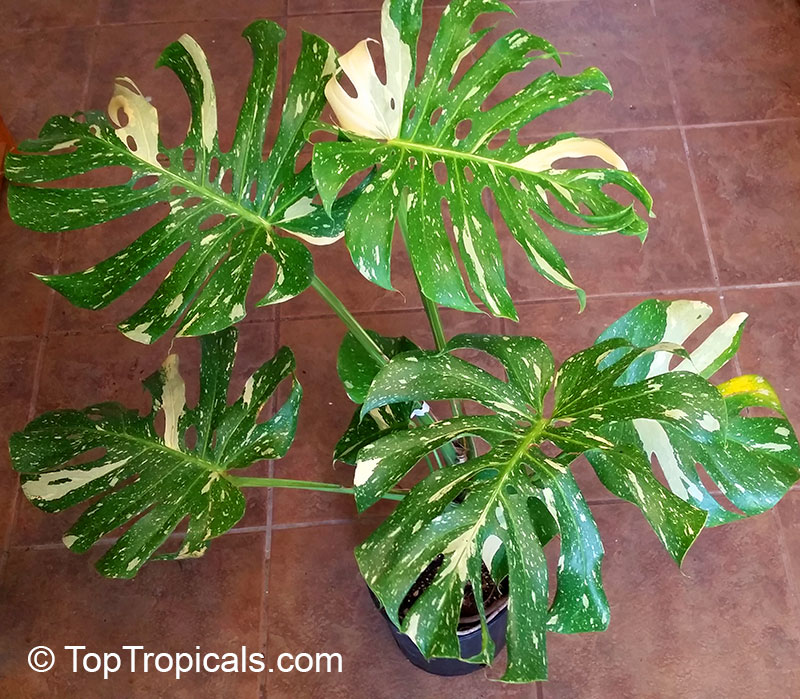
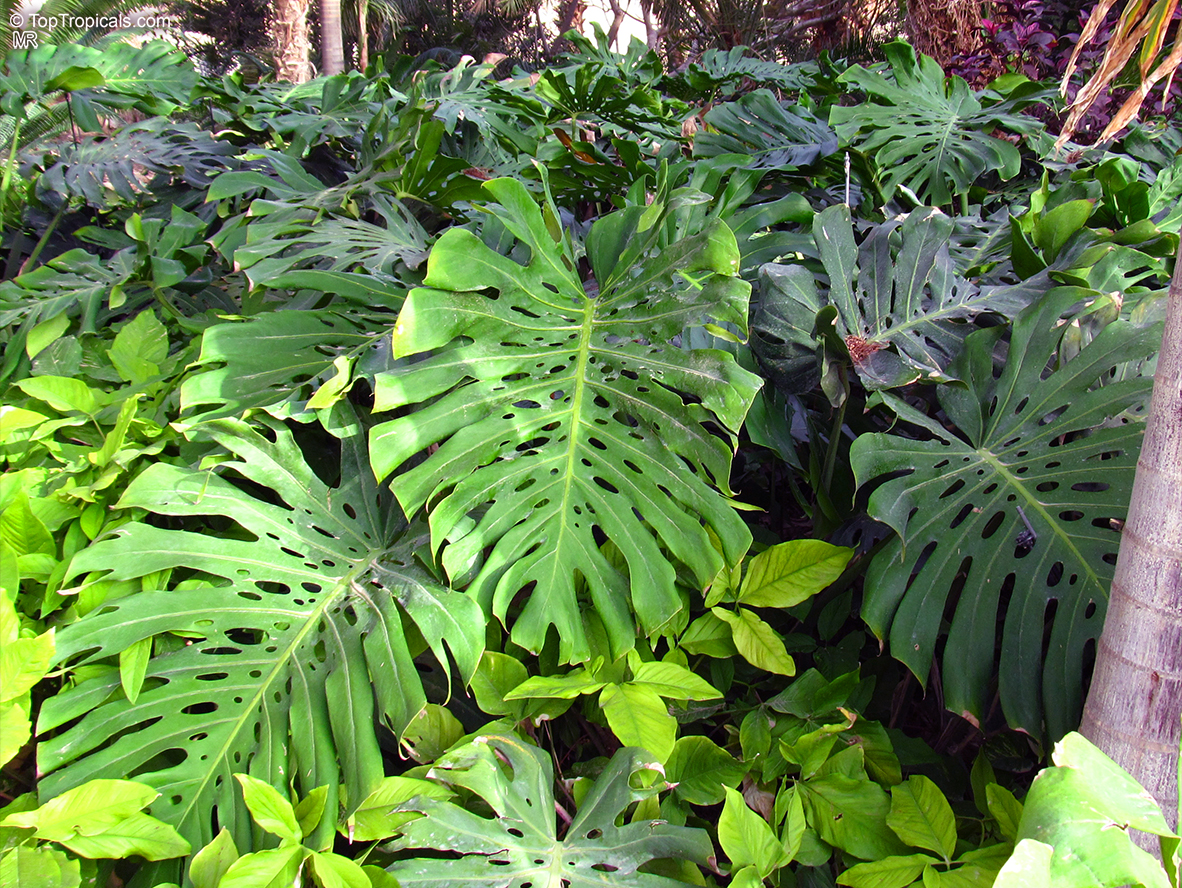
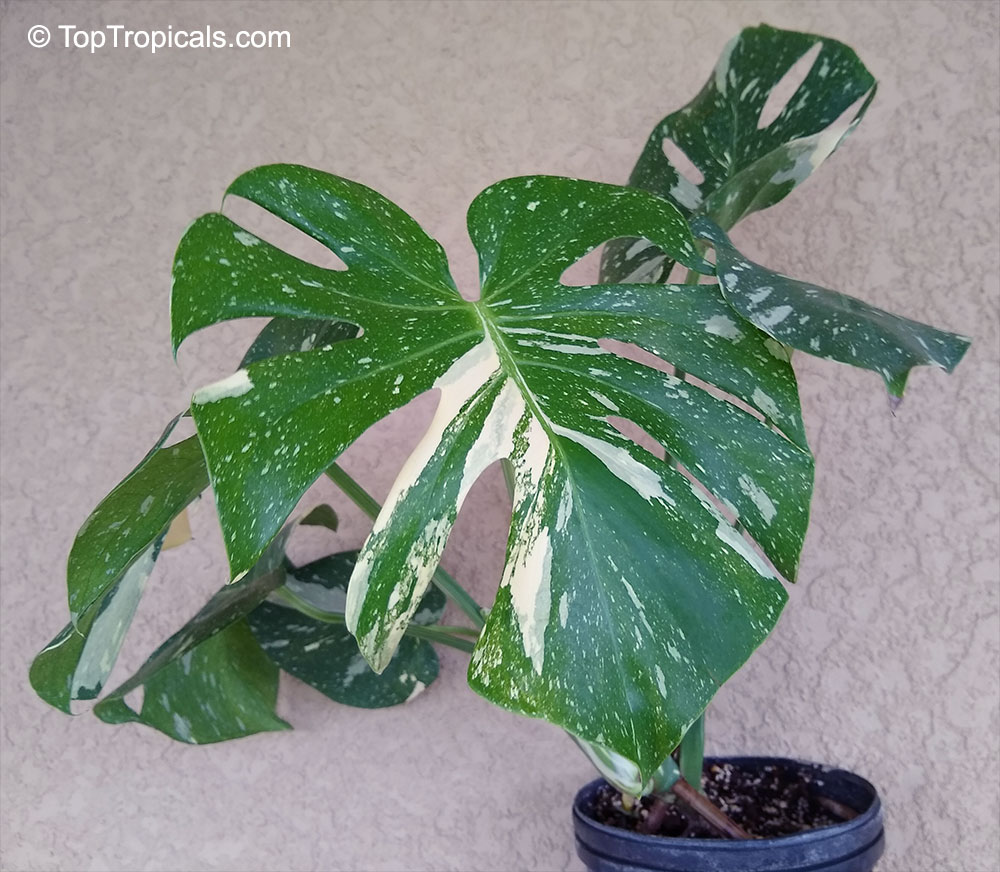
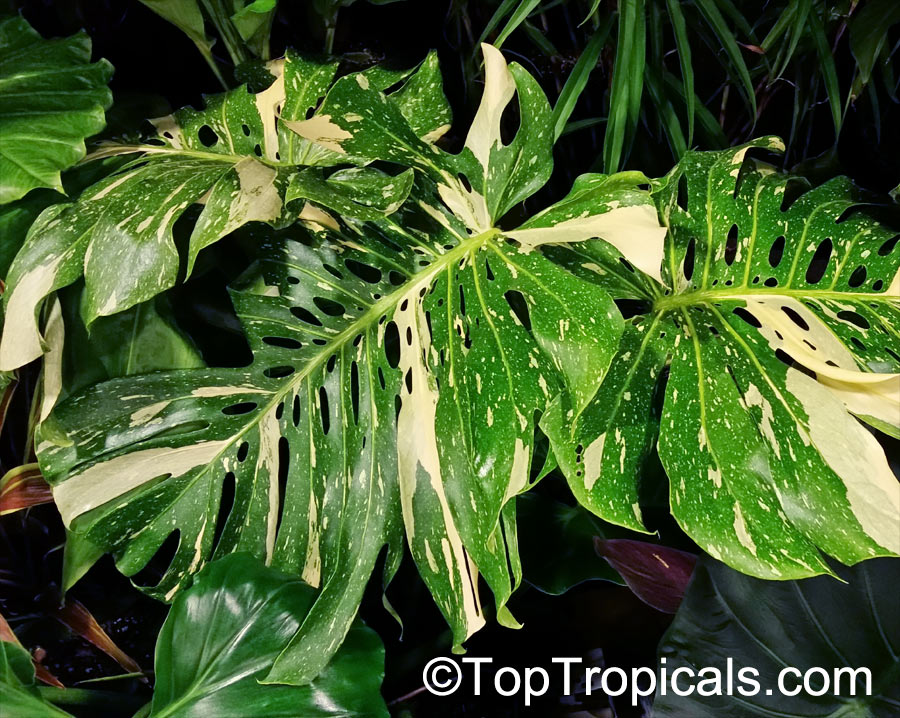
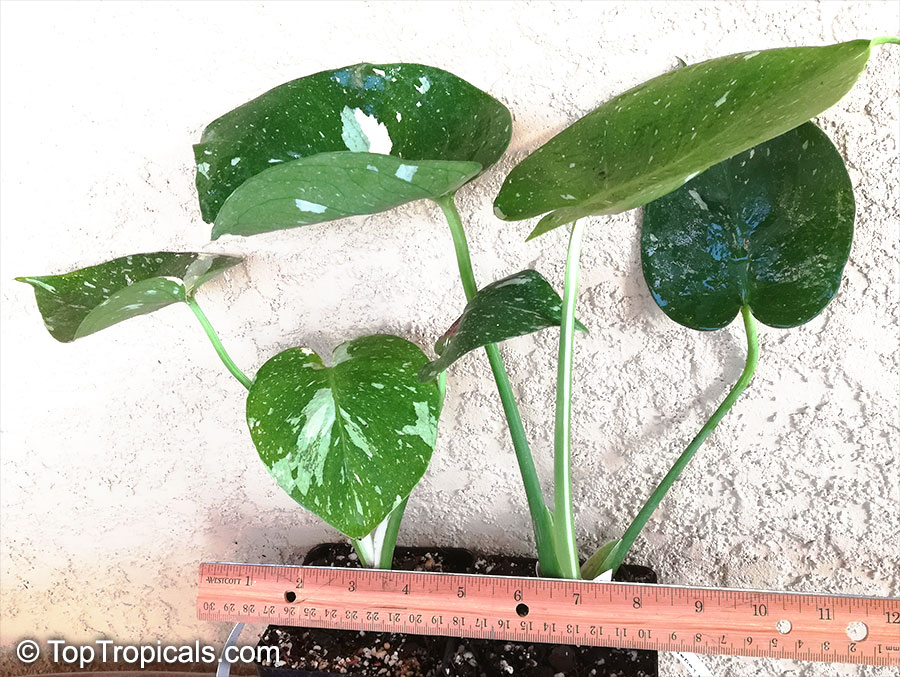
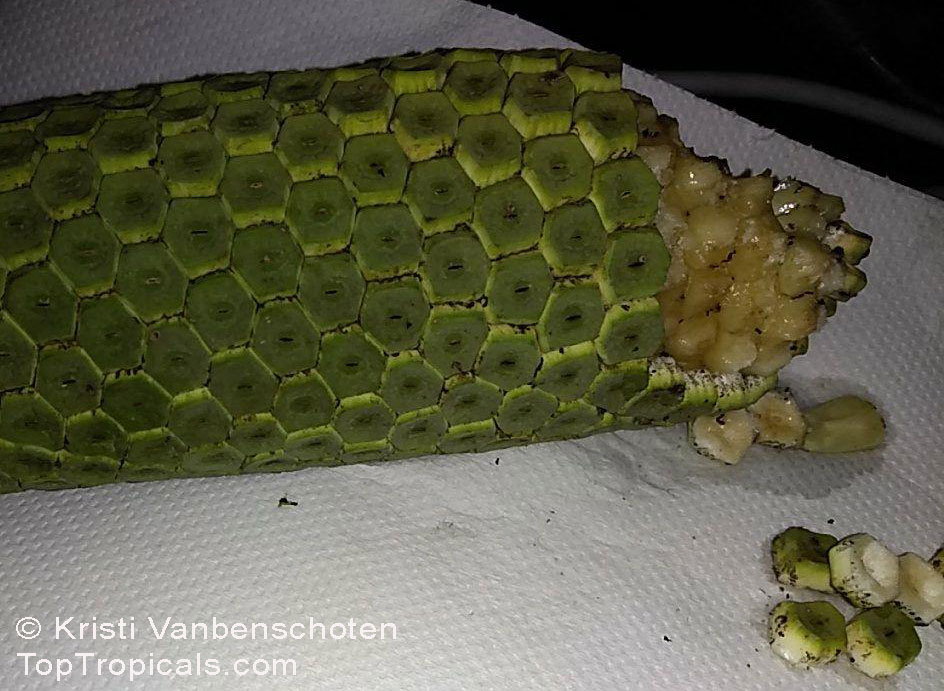
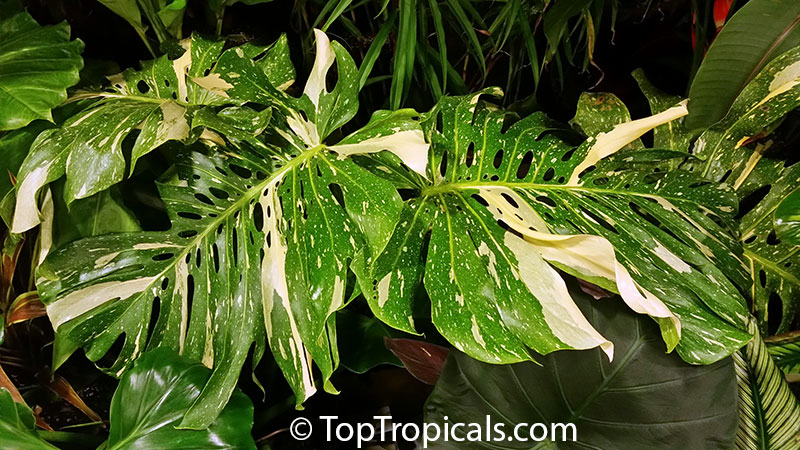
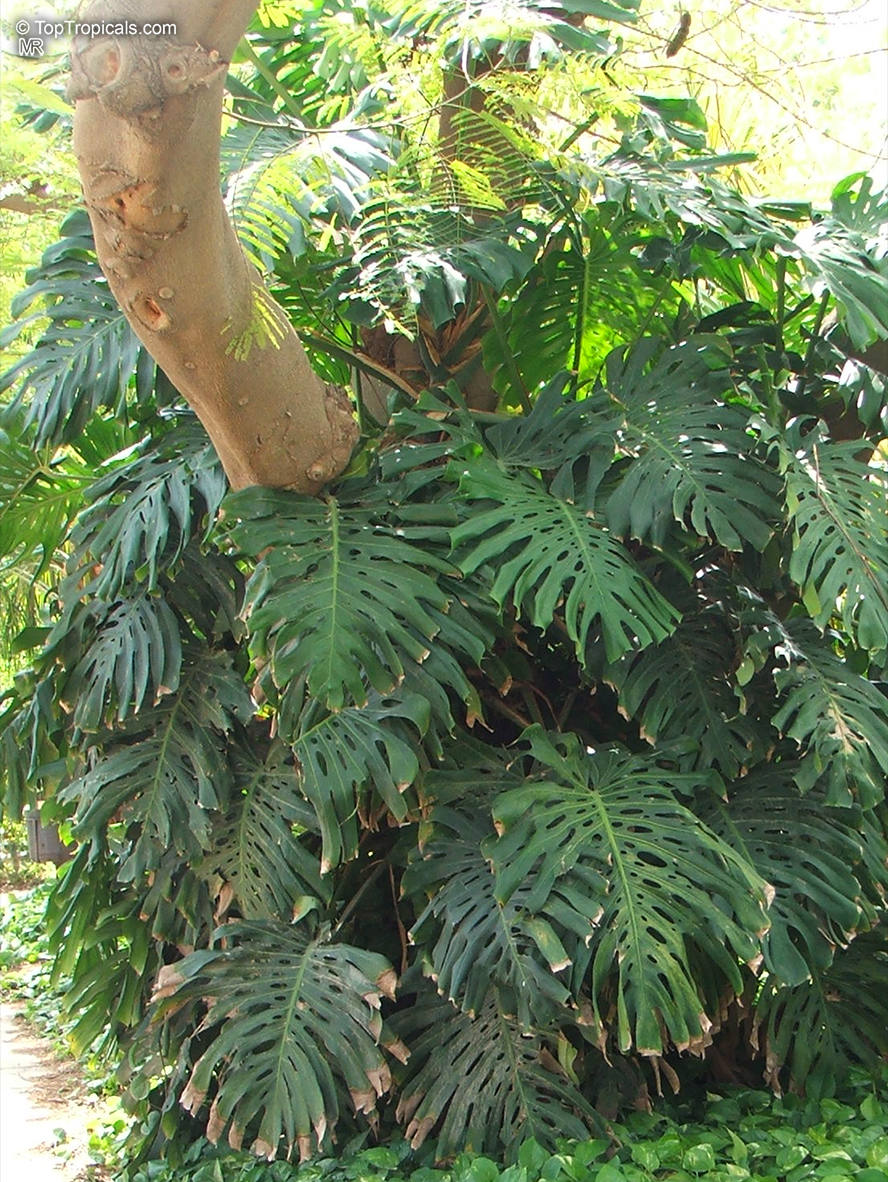
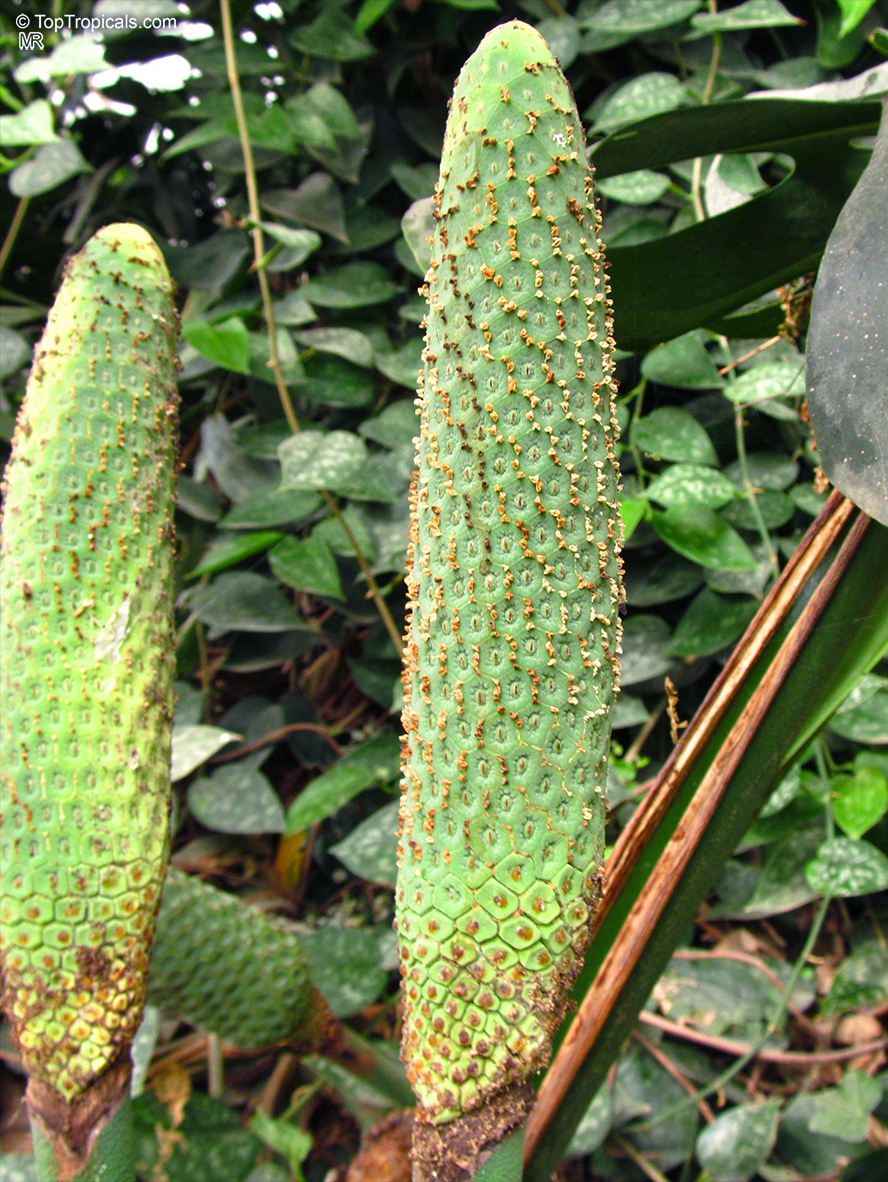
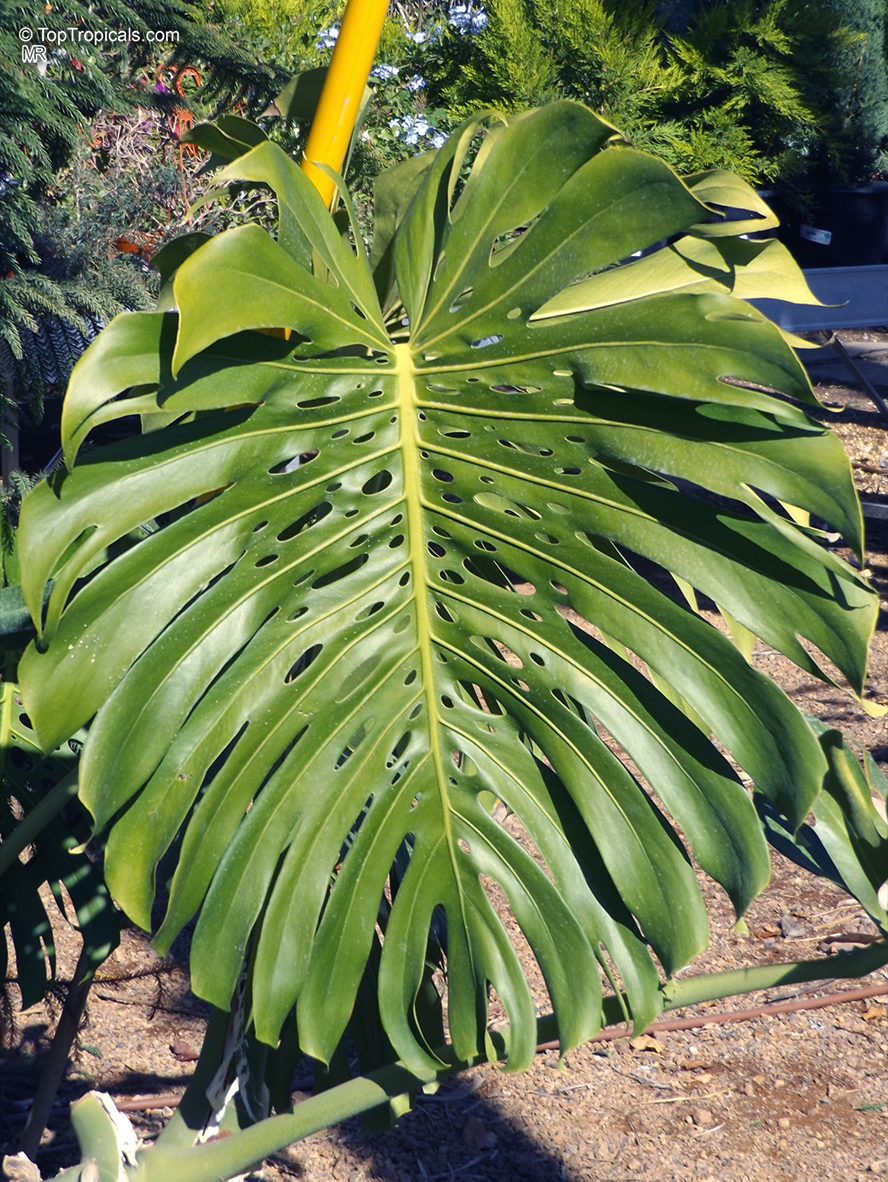
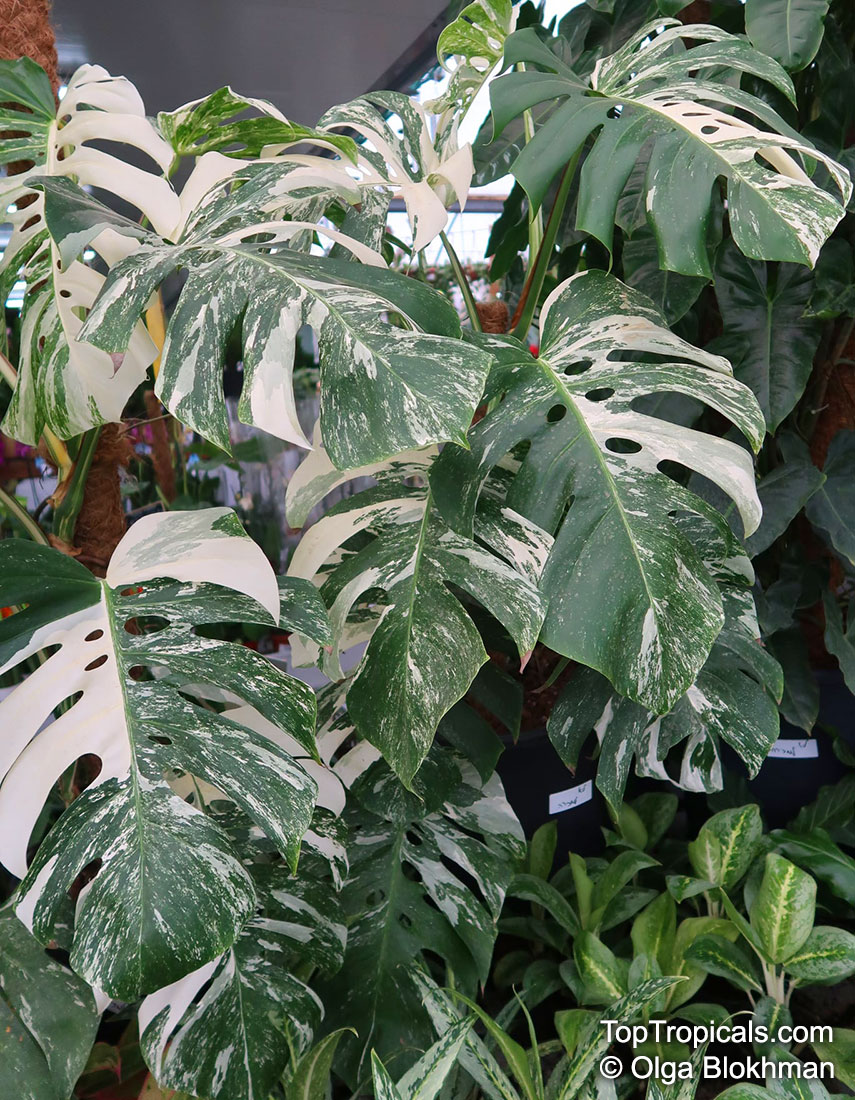
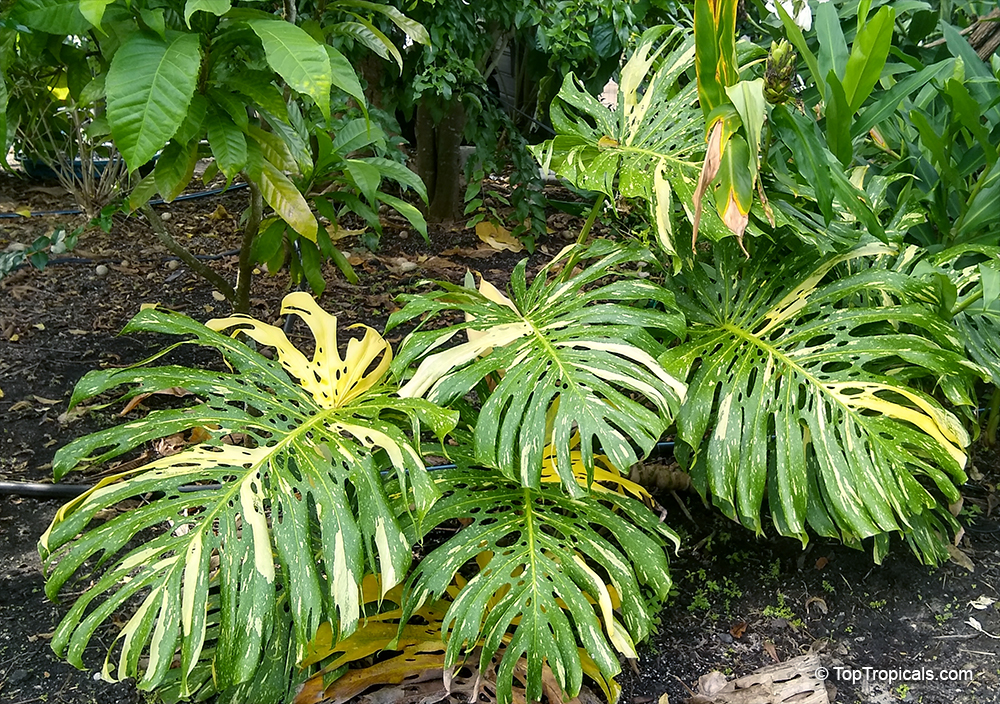
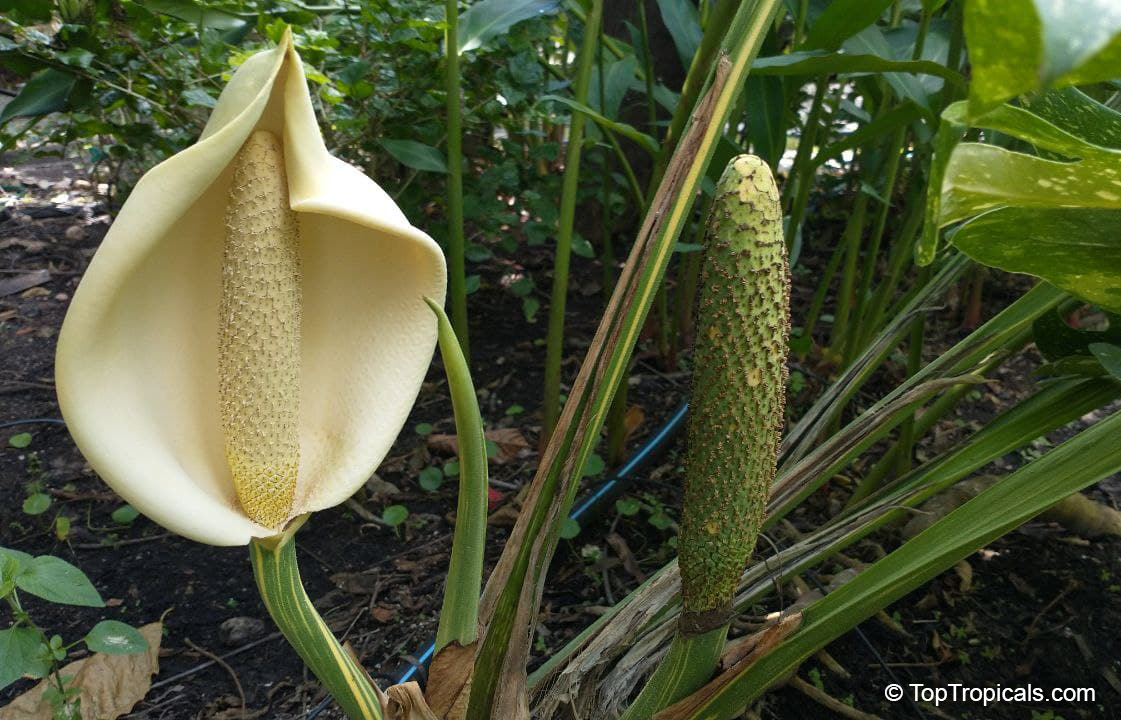
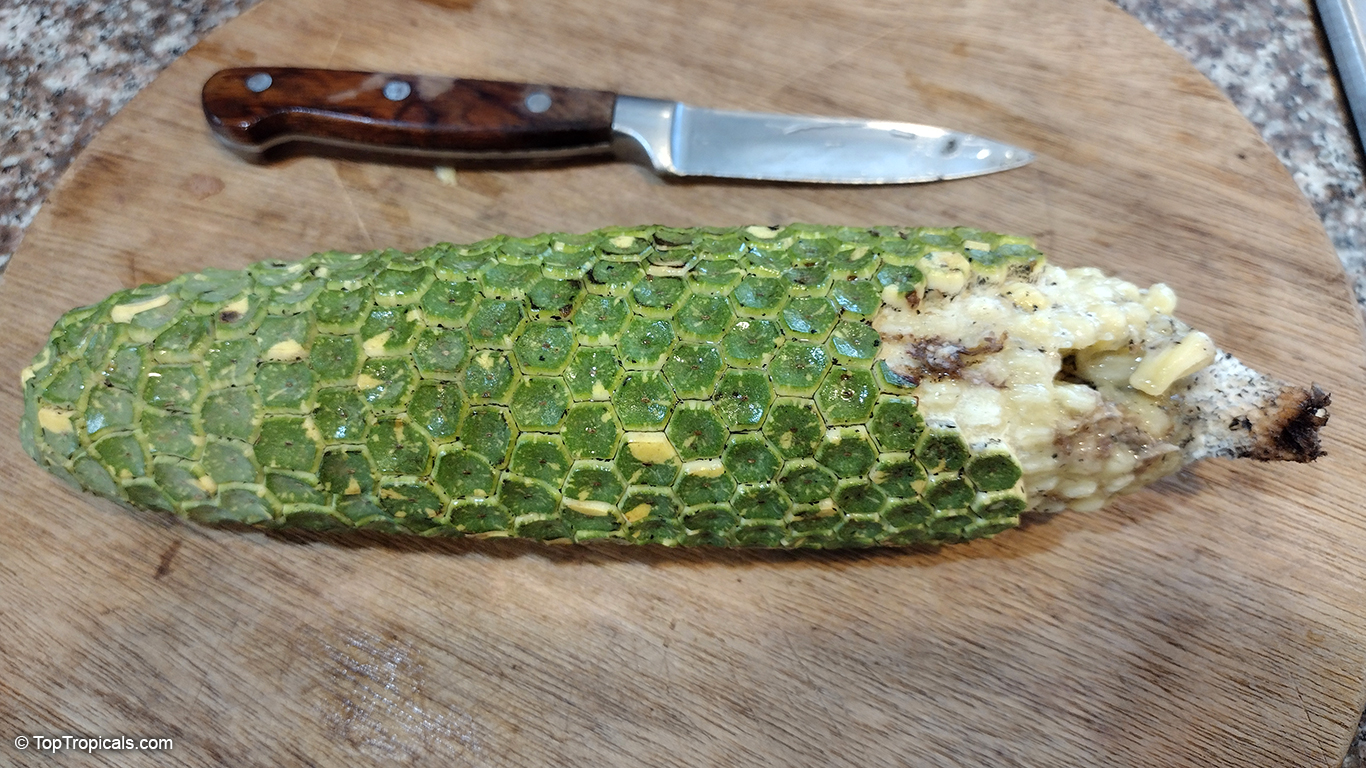
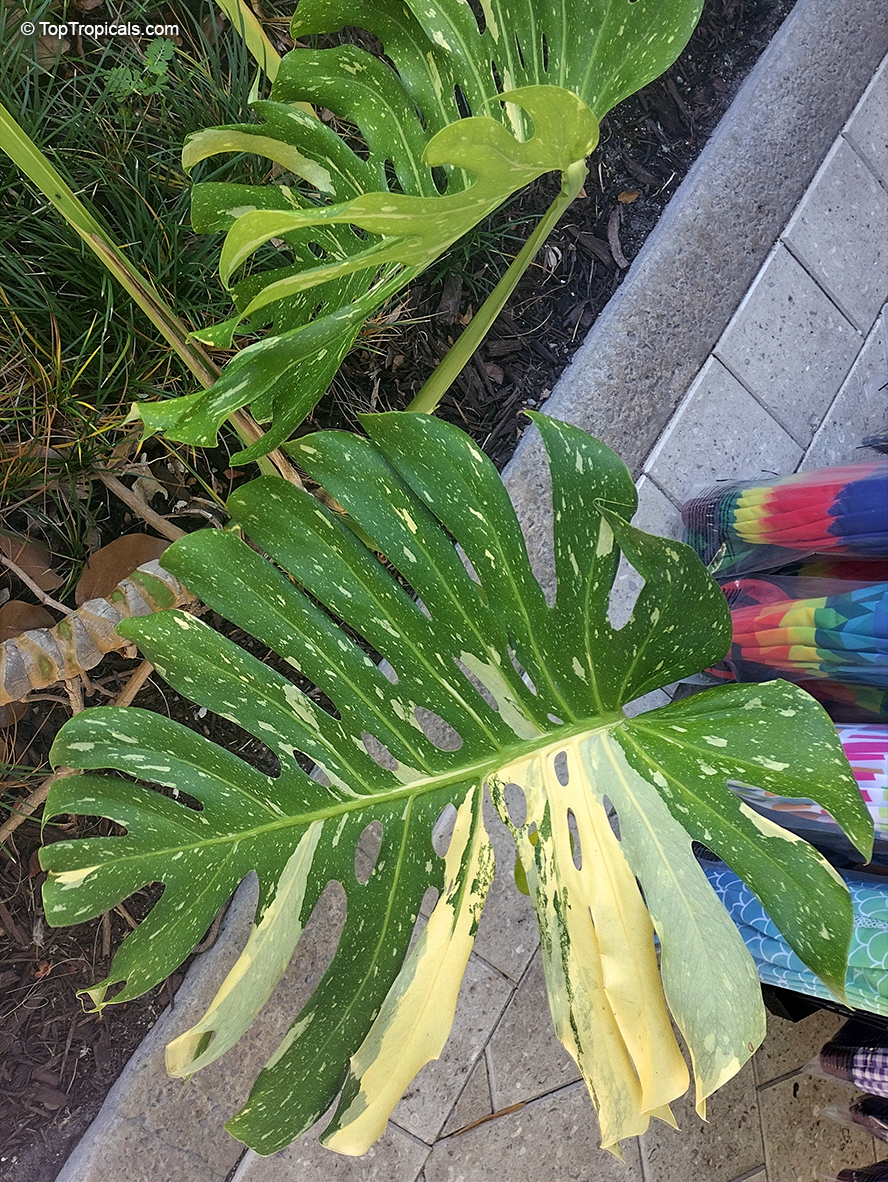
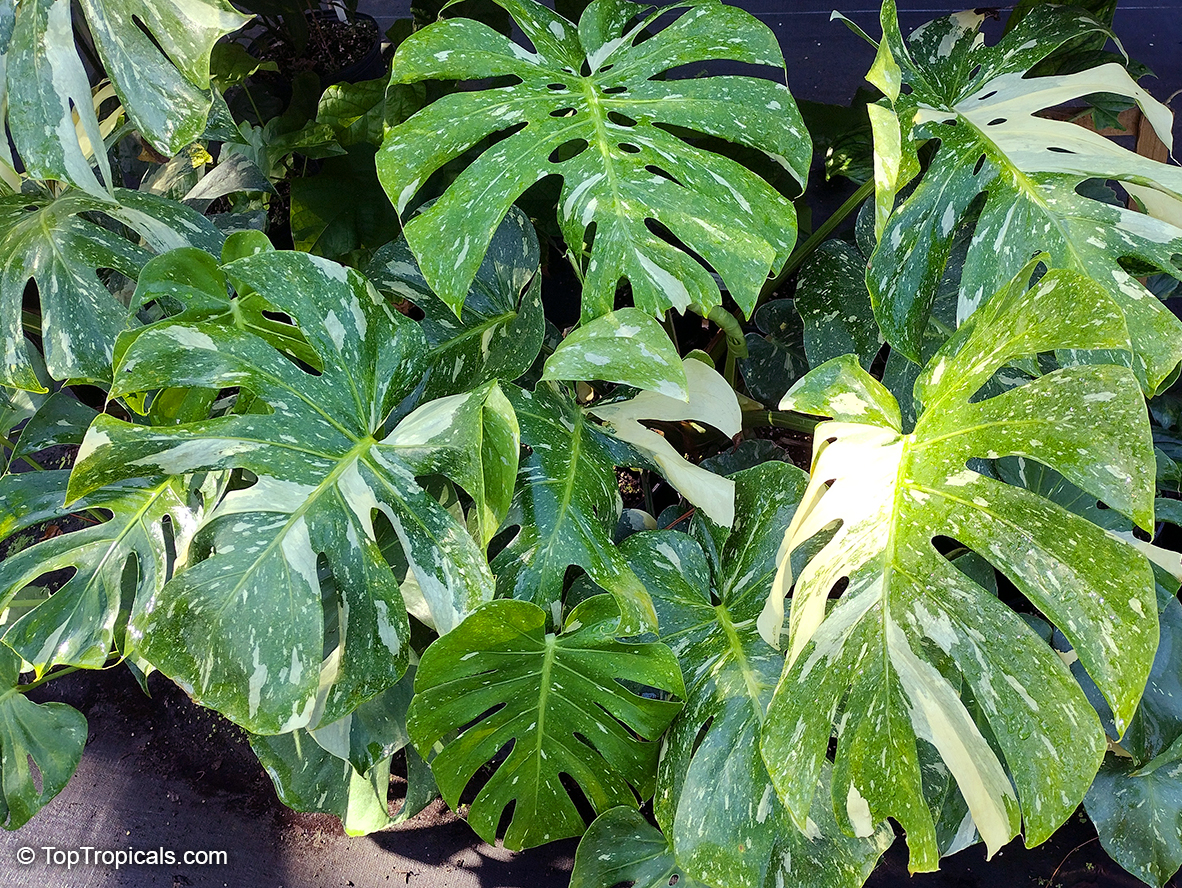
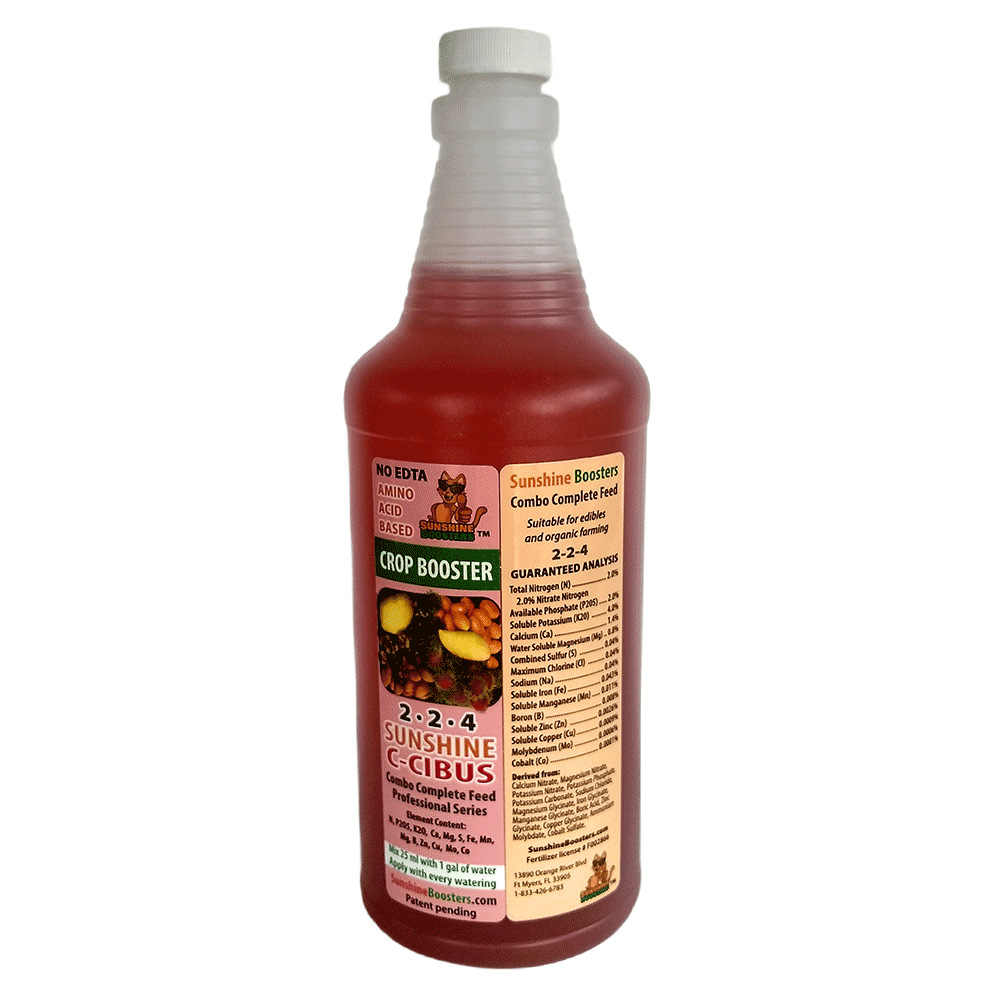 SUNSHINE C-Cibus (NPK 2-2-4) - Crop Booster for every watering.
SUNSHINE C-Cibus (NPK 2-2-4) - Crop Booster for every watering. 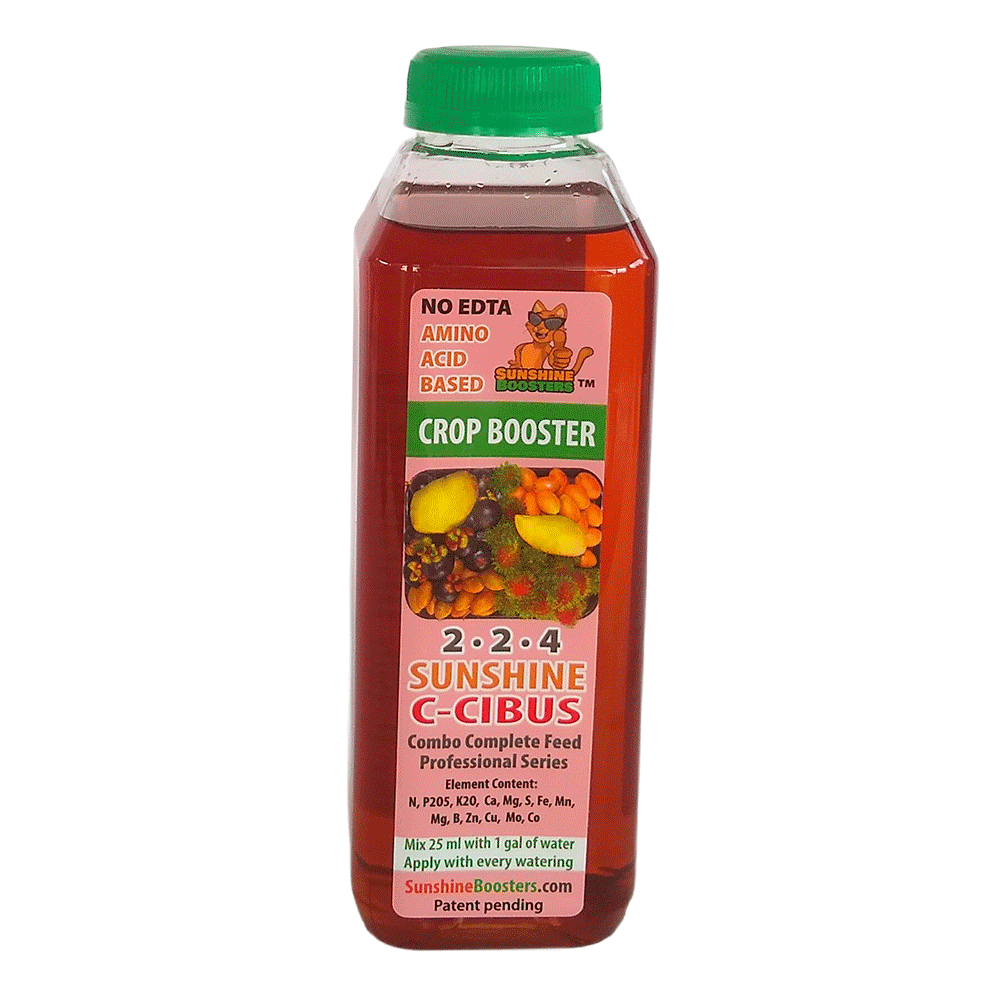 SUNSHINE C-Cibus (NPK 2-2-4) - Crop Booster for every watering.
SUNSHINE C-Cibus (NPK 2-2-4) - Crop Booster for every watering. 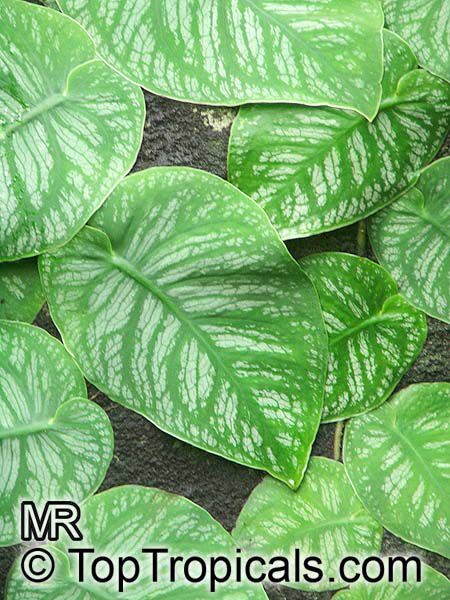
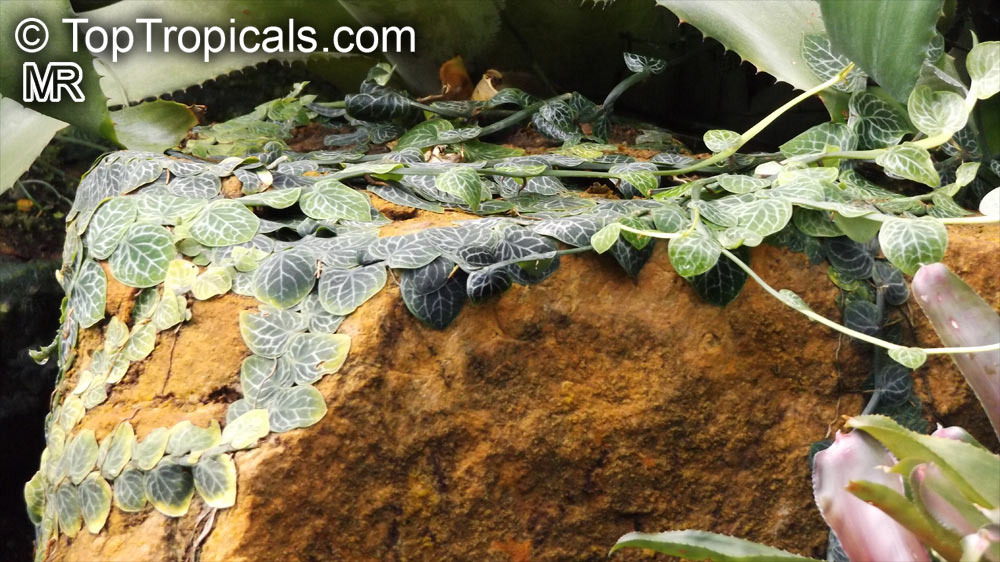
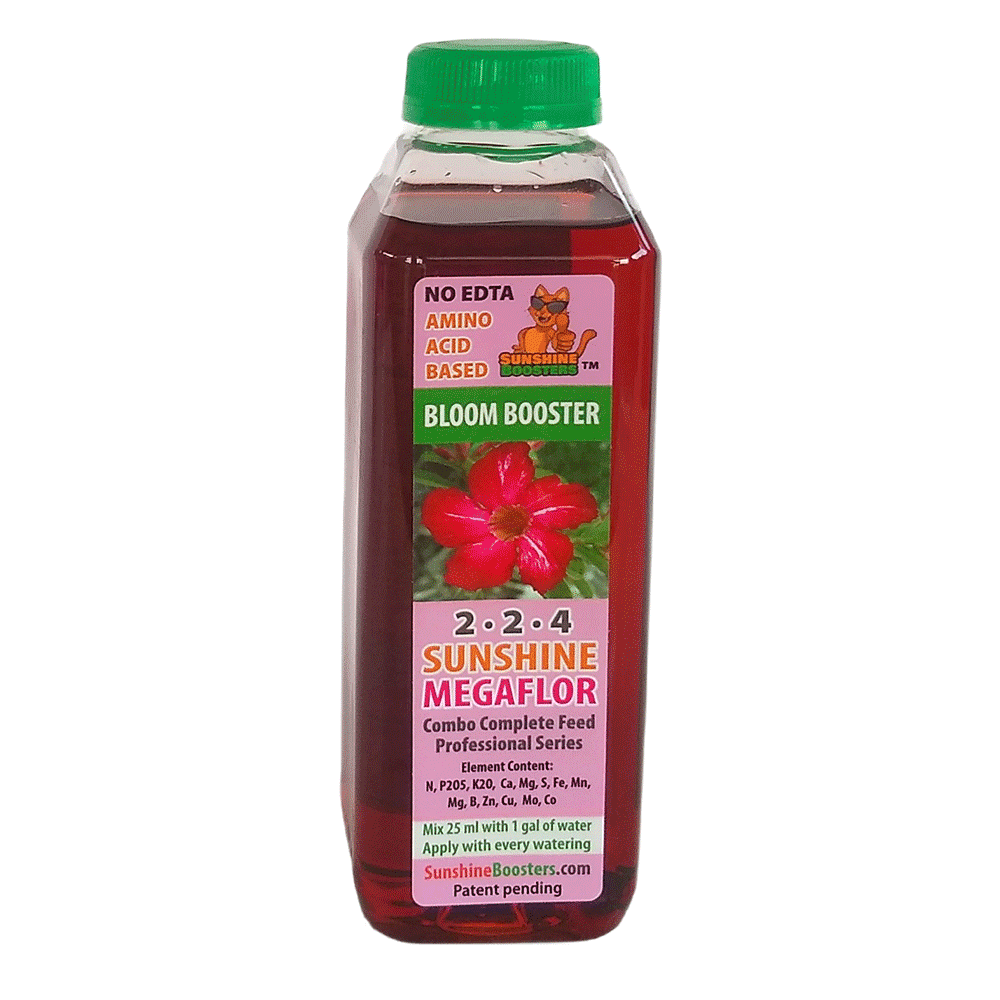 SUNSHINE Megaflor (NPK 2-2-4) - Bloom Booster for every watering. Formulated especially for blooms, to boost flowering, improve flower size and quality, and stimulate pollen development. This is an eco-friendly nutrition booster that can be used for organic gardens. Can be used for daily feeding with every watering. Scientifically-balanced stable formula is organic Amino-acid based and has NO EDTA chelators to eliminate nutrients lockup; it does not affect crop taste. Organic Amino acids greatly enhance stability of all Sunshine boosters and provide excellent absorption of trace elements. Pollinating insects friendly.
SUNSHINE Megaflor (NPK 2-2-4) - Bloom Booster for every watering. Formulated especially for blooms, to boost flowering, improve flower size and quality, and stimulate pollen development. This is an eco-friendly nutrition booster that can be used for organic gardens. Can be used for daily feeding with every watering. Scientifically-balanced stable formula is organic Amino-acid based and has NO EDTA chelators to eliminate nutrients lockup; it does not affect crop taste. Organic Amino acids greatly enhance stability of all Sunshine boosters and provide excellent absorption of trace elements. Pollinating insects friendly.